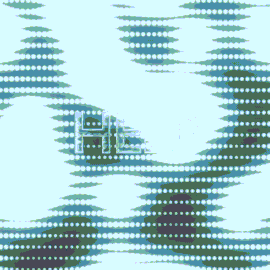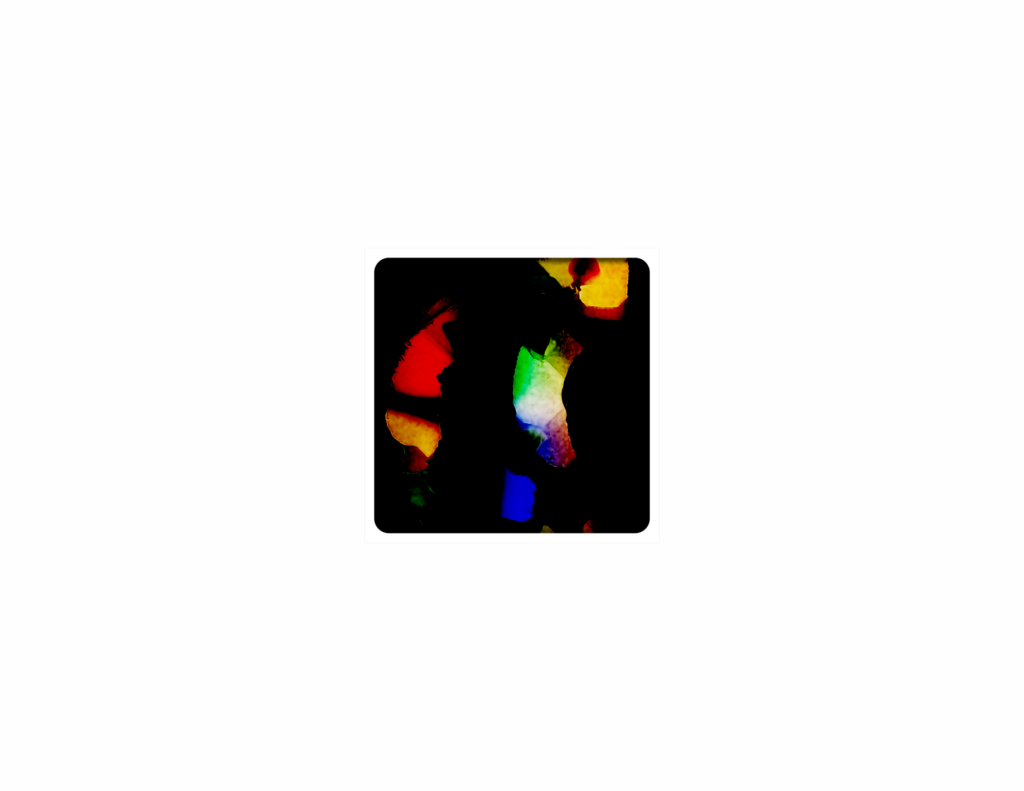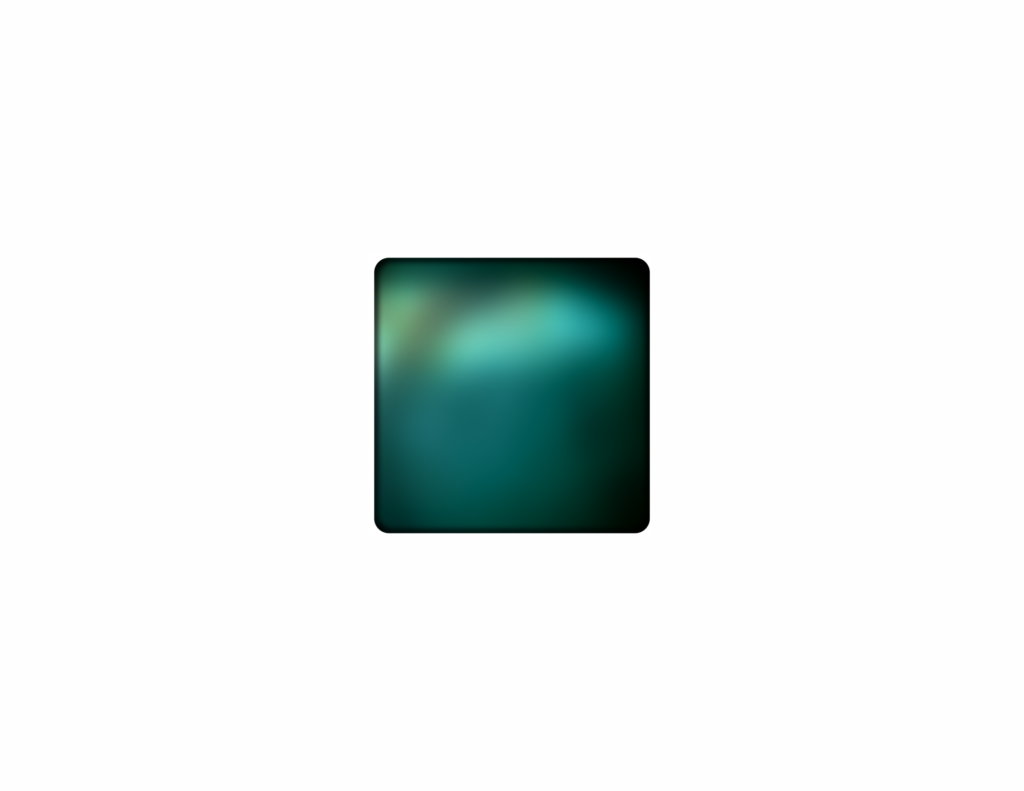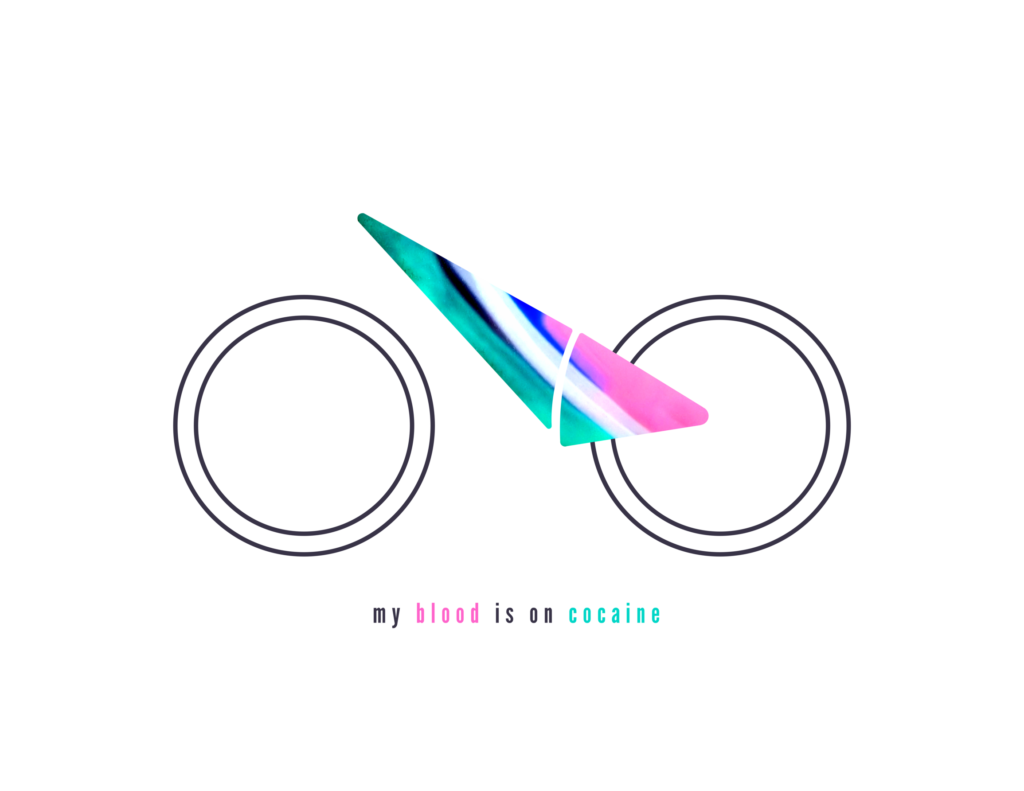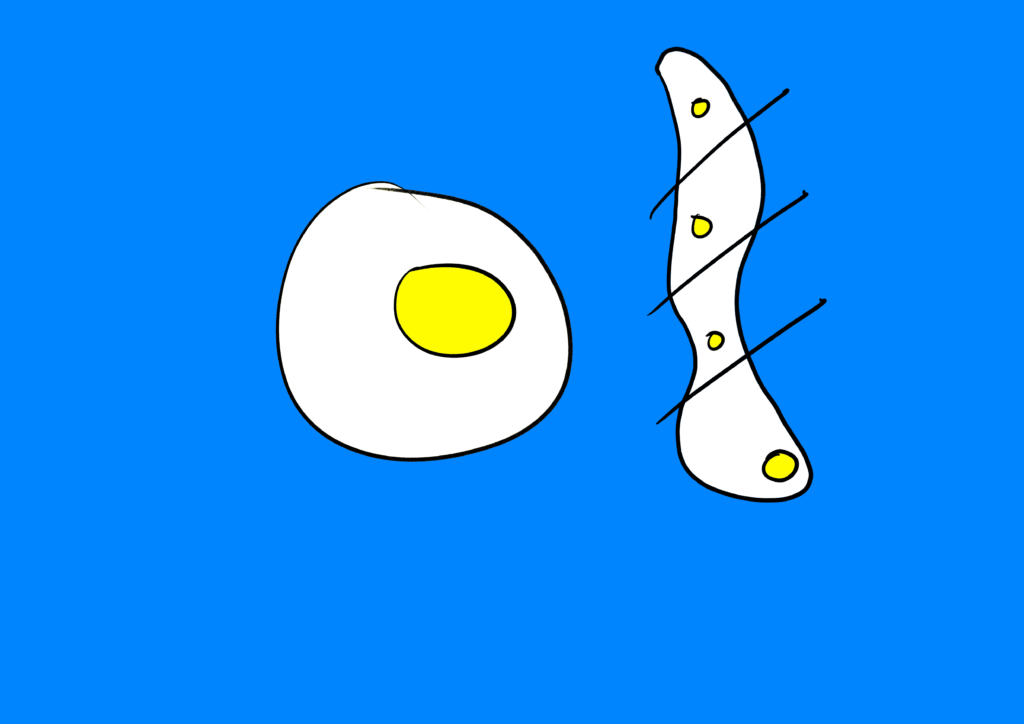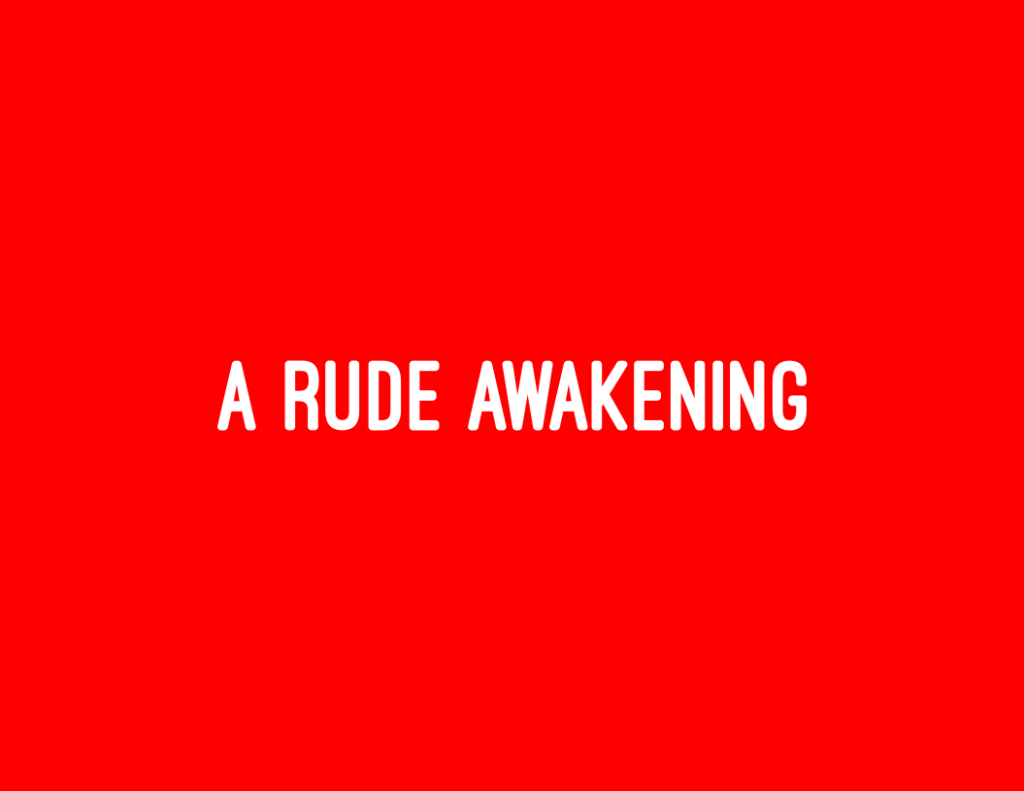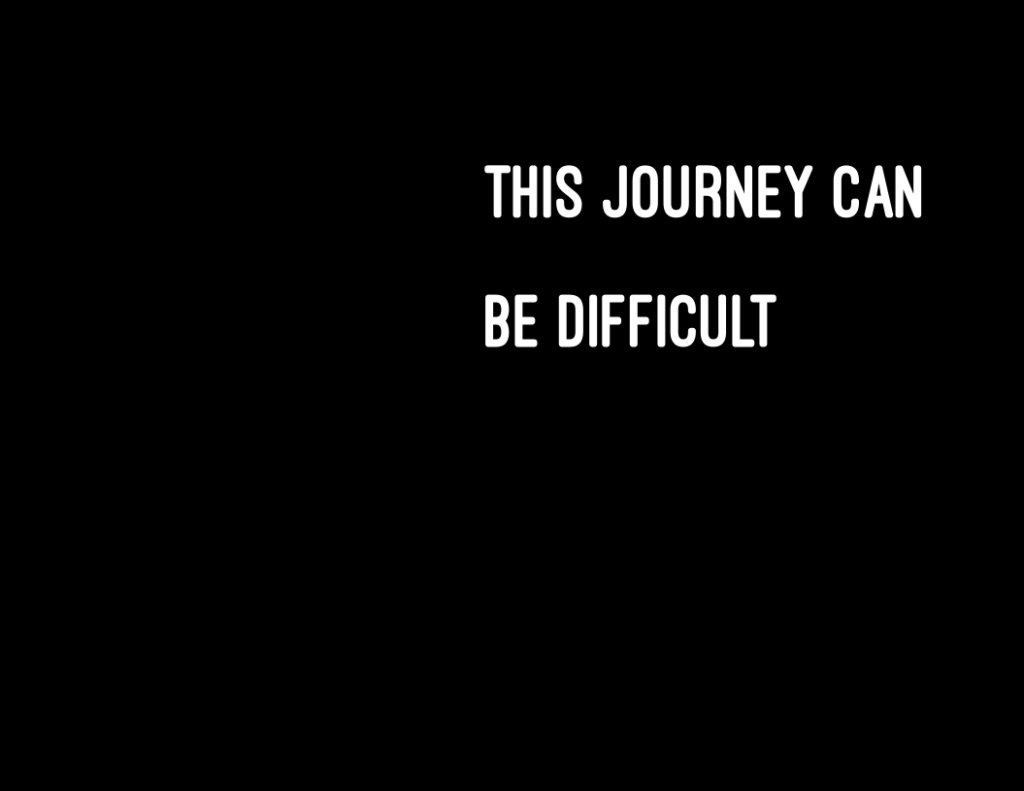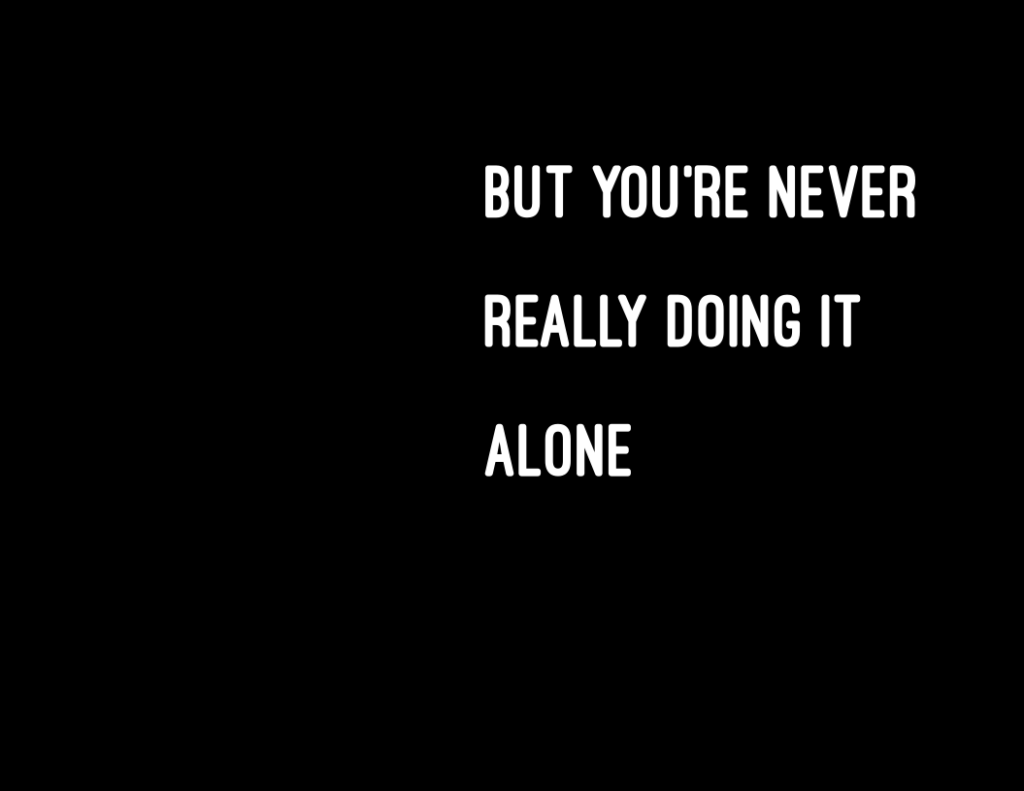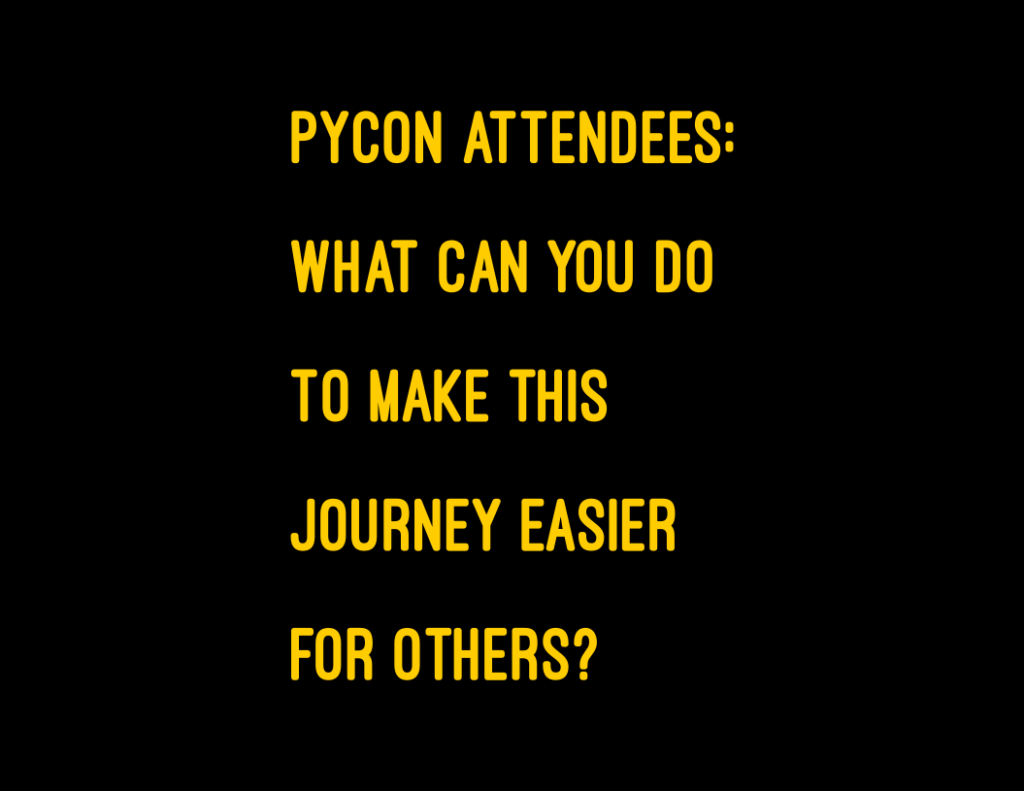Messing about with some motion graphics in Blender with Geometry Nodes.
Category: art
-
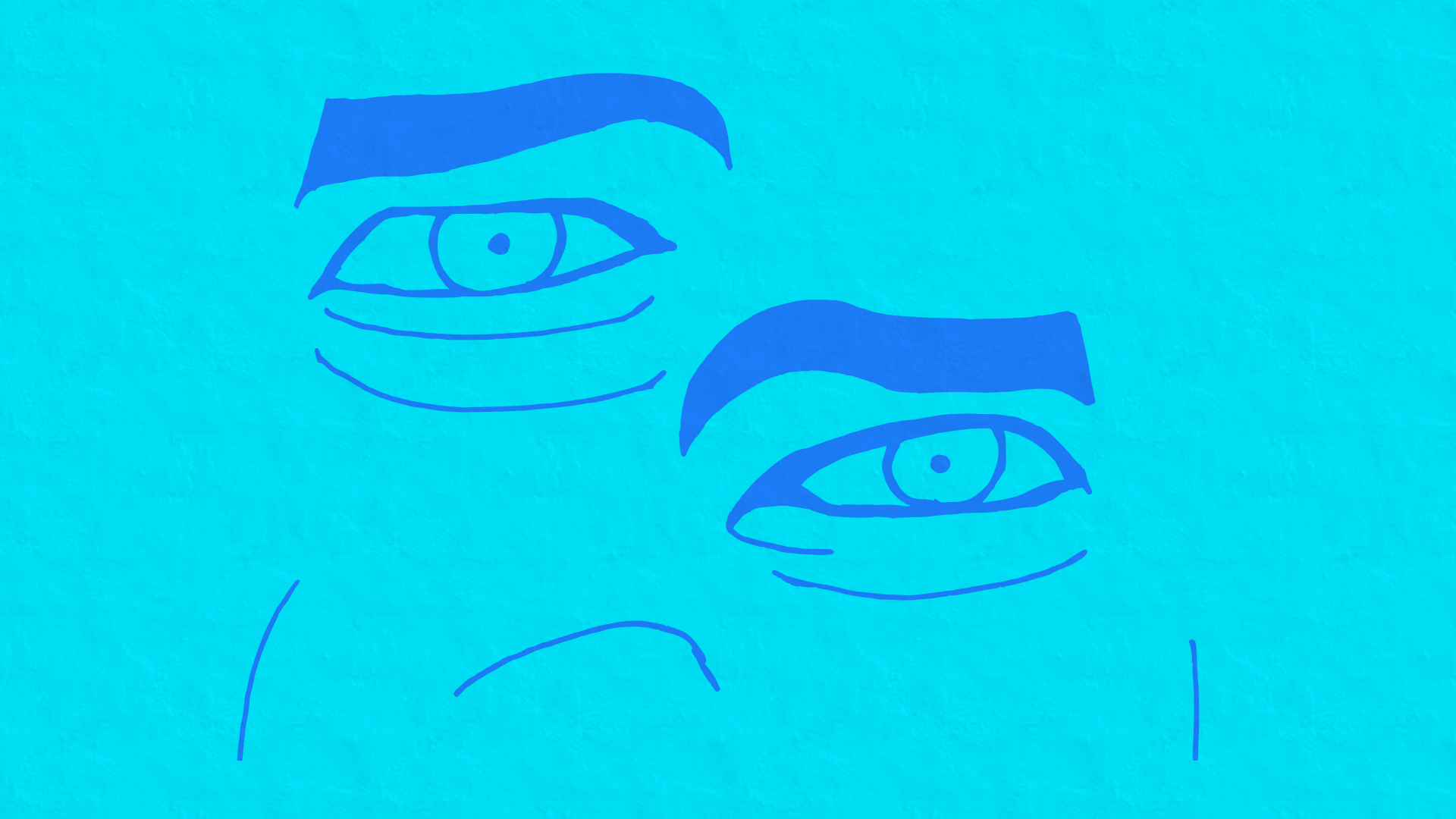
On being a poet and not knowing it.
When I’m very lucky, I have both the time and the inclination to go back through personal notebooks and journals. This doesn’t happen very frequently, and it’s always enlightening, so I value greatly the opportunity to let my past self speak to the present me.
This particular time I was struck by how much poetry I’ve written. This type of writing goes back much longer than a decade, and it seems to be a frequent way that I approach recording and/or processing thoughts and feelings from a point of abstraction rather than one of reason or logic.
One of the dangers of art education, if it can be considered a danger, is that of learning the mechanics of things like balance, negative space, narrative structure, and other aspects of “how the sausage is made” regarding artistic forms. My multidisciplinary doctoral education in fine arts has given me the tools to peer straight through the curtain of many artistic forms and view them from the lens of a critic almost by default.
And then there’s poetry.
While I have certainly read poetry, it is mostly considered to be in the realm of pure paper-page stuff (i.e., literature) rather than the more performative or gallery-walled works that were within my program of study. Poetry is a thing apart.
This is perhaps a part of why I find myself writing poems: my mind never formally or deeply learned its rules, structures, or formalities. Thus, my brain finds in the poetic forms such freedom. I literally don’t know enough to critique myself (or, at least that’s what I tell myself). What I write seems poemish to me, so it is, and I’m unrestricted while writing it.
I liken this how I talk about bass guitar.
I do not play bass guitar. I have, however, been playing a standard 6-stringed guitar for more than 20 years at this point. It’s great fun. I’ve learned many songs and forgotten many others. I’ve played grunge, classical, jazz, country, indie, and so many other styles. I’ve noodled. I’ve written my own songs. I even know where most of the notes are and can reasonably play along with simple tracks without learning them first or having heard them before.
But when someone asks if I play bass guitar, I don’t say yes. I say that “I can probably hit the notes, but I don’t consider myself a bass player. That’s a whole different thing.”
Poetry is the bass guitar of writing for me. It uses the same words and the same sounds; it uses metaphors and other common language components just the same as a play script, an academic paper, or a monologue, but I respect it enough to consider it a wholly different thing. There’s just so much about it that I know I don’t know.
A few years ago, I asked my sister to critique a poem for me. She’s a pure-literature poem person who I know has the capacity to do this. Well, it’s now a few years later, and she still hasn’t provided a critique (at first she said I was in line behind a few other people, and now I’m next up, but, well, her throughput is incredibly slow. And yes, Mary, this is a public callout. (p.s. I love you, and I still want that critique.)
Waiting for a critique has been… annoying. The public library came to the rescue in the form of a newsletter where I saw that I’d missed a poetry night. The bio of the person who presented or read at that night indicated that there was a local poetry group that met twice a month: once for writing and once for critique. I had to go.
To date I’ve attended only the writing night. At first I had no idea how to find them so I sat at a table in the coffee shop and for almost the first time intentionally wrote a poem. I was near a huge window. There was a line of gently swaying drop lights descended from tall ceilings. The coffee was… okay. It got cold too quickly but the refills were free!
I ended up writing what I think is a poem about the complexity of human relationships with alternating sections that have strong imagery related to both the vastness of the universe and woodworking. It was also influenced by the lines and lights and windows. It seems to be also about the location of things and the points that connect them.
It is wholly unlike anything I’ve ever written before. I very much doubt that it’s “finished” in any formal sense (and I wouldn’t know what would make it so in the first place). I have literally no idea what feedback I will get when I bring it for critique or review or whatever, and I don’t even know what form that feedback might take. It’s all so very exciting.
It was also nice to be around what I’d describe as “word people” who legitimately try to search for the word that actually does what they want (both in meaning and phonetically) rather than something approximate (unless that’s what they’re going for). Didn’t know how much I’ve missed that recently until I was around it again.
I don’t have any strong point to conclude this write-up. I’m not really trying to make a point. It was just nice to get lost for a little bit in words like I used to. We’ll see what, if anything, comes of it.
Probably poems.
-

Triangle Negative Space Appreciation Club

Triangle Negative Space Appreciation Club
You like bikes. I like bikes. It’s a bike-liking bike fest. Or, maybe, you like triangles ― and negative space.
Either way, let’s appreciate these things together.
-
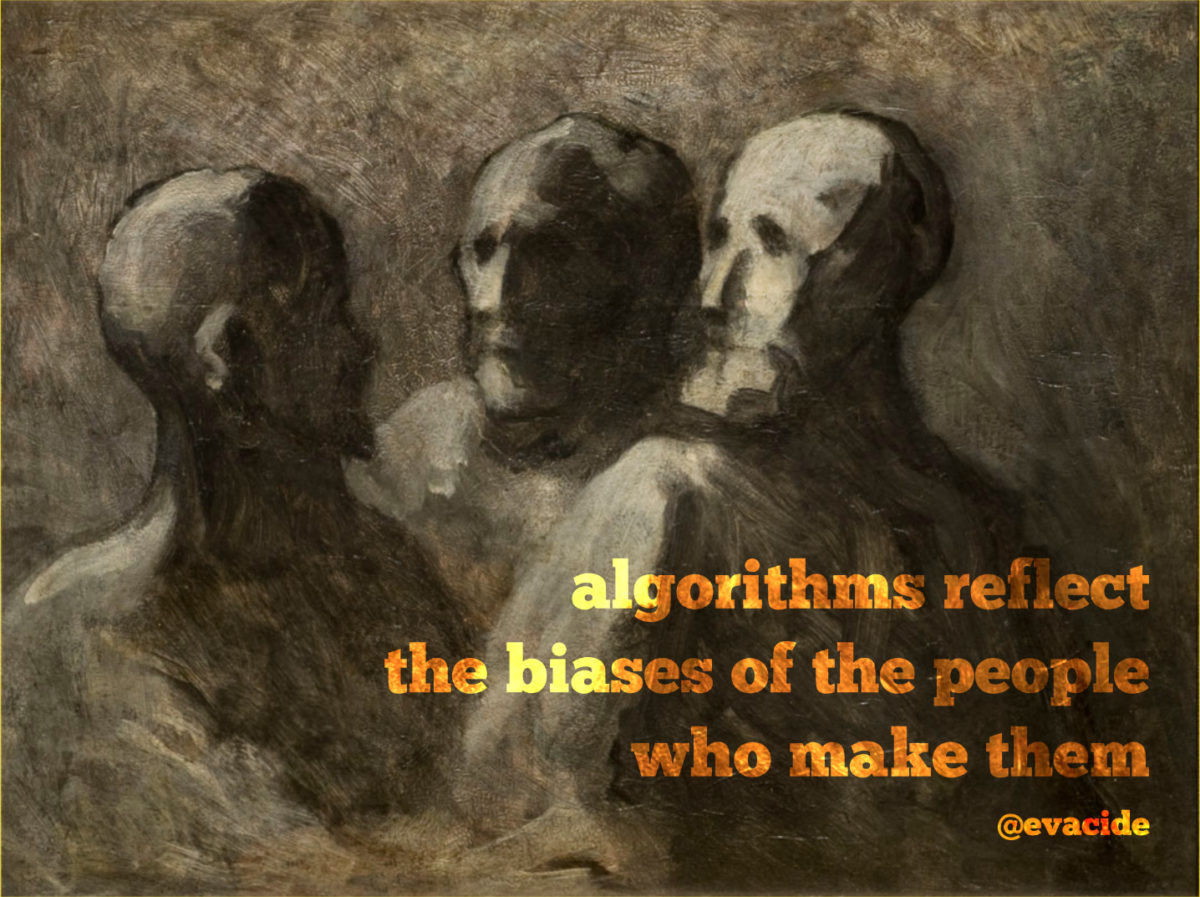
One True Tech Tweet Visualized
I conceived of an idea for an interactive performance that could take place in the context of The Art of Python at PyCon2020―the latter was graciously accepted to their hatchery program―and would have led directly into a collaborative workshop designed to encourage more original dramatic works from the lived experiences of technologists had the COVID-19 pandemic not shut down all things.
I have a longer post that went into the details at the time―and there were many―but the short description is that I was interested in collecting short statements of truth, particularly from the tech community about aspects of their work and life in tech to become a part of a live performance at PyCon2020 that sadly failed to happen. (Some things, like theater, really do benefit from being in-person).
At the time, tech twitter was filled with such wondrous quotes of knowledge. It was sometimes funny, sometimes sad, often woefully accurate―but almost always resulting in gained knowledge about some sort of lived experience shared with the broader community.
In order to write about the project I needed to demonstrate the types of quotes I expected to receive, and years of following some wonderful technologists had provided many examples of the incisive wisdom I hoped to receive in my own survey (which you can see here).
At the time we’d only received a few responses:
- Learning on your own is hard.
- I don’t work in tech, but I make tech work for me.
- End-users are incapable of following simple instructions or describing accurately what is on their screen.
- All the free snacks didn’t make up for being fired by a boss who couldn’t tell me what my job was.
- When you say only 1% and mostly vulnerable people will die, the disabled community is preparing to mourn the loss of many in their community.
- I want to be a minimalist, but can’t afford it
- our work and world are tiring and the best thing we can do is do good for one another
- Ignore Gatekeepers. There’s no one perfect background or degree or experience that makes you a “real developer.”
- Many of our tools are not convivial because the corporations that design and sell them Don’t have our interests in mind, only profit.
I thought visual examples might be helpful. Finding nuggets of wisdom from public tech twitter was not very difficult. I combined these with public domain art.
It never resulted in much beyond the above because the pandemic dramatically changed everyone’s plans. Some of these images have been sitting for so long unused that when I came across them again over the new year I felt compelled to share. I have to admit that I’d occasionally remember them and look for them on my blog and not find them. (Future historians take note: the pandemic and lock down and everything was really weird with respect to memory and the perception of the passage of time, among so many other things).
To be honest, I’m not even sure I could find or link to the original tweets anymore considering the incredible changes over at Twitter/X. After so much upheaval I’m not going to try. You’ll just have to trust me that these handles said these words at some point in a tweet and I thought they were worthy of enshrining with public domain art to encourage participation in a live performance art project at a tech conference.
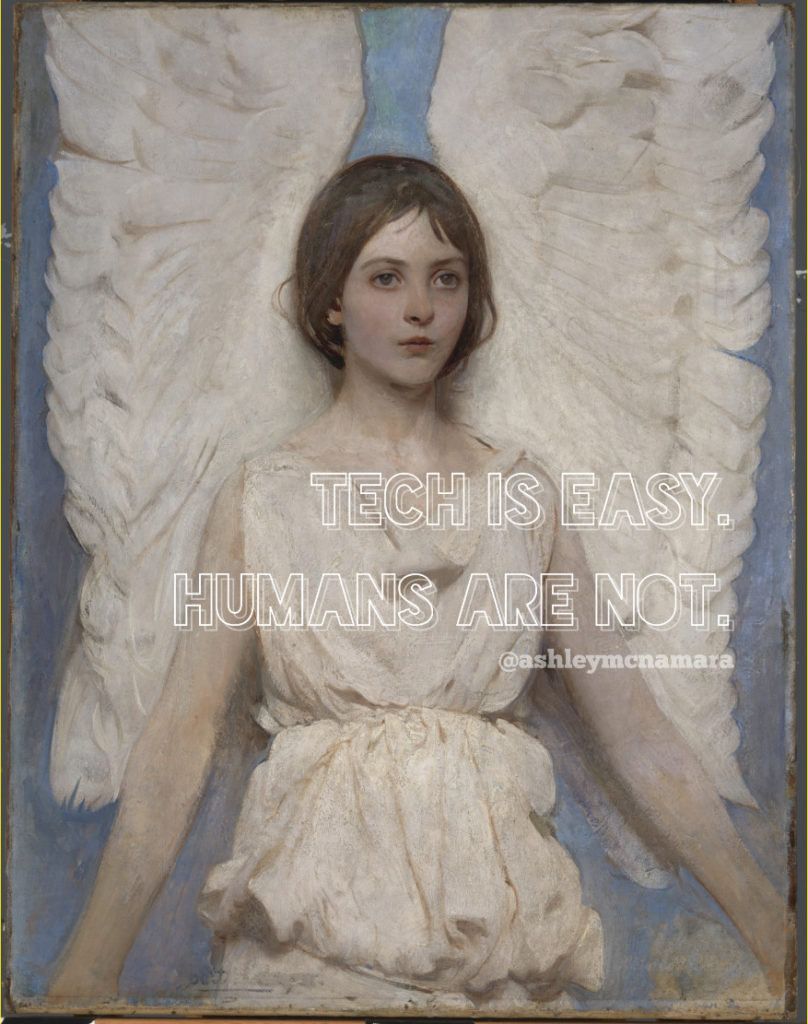
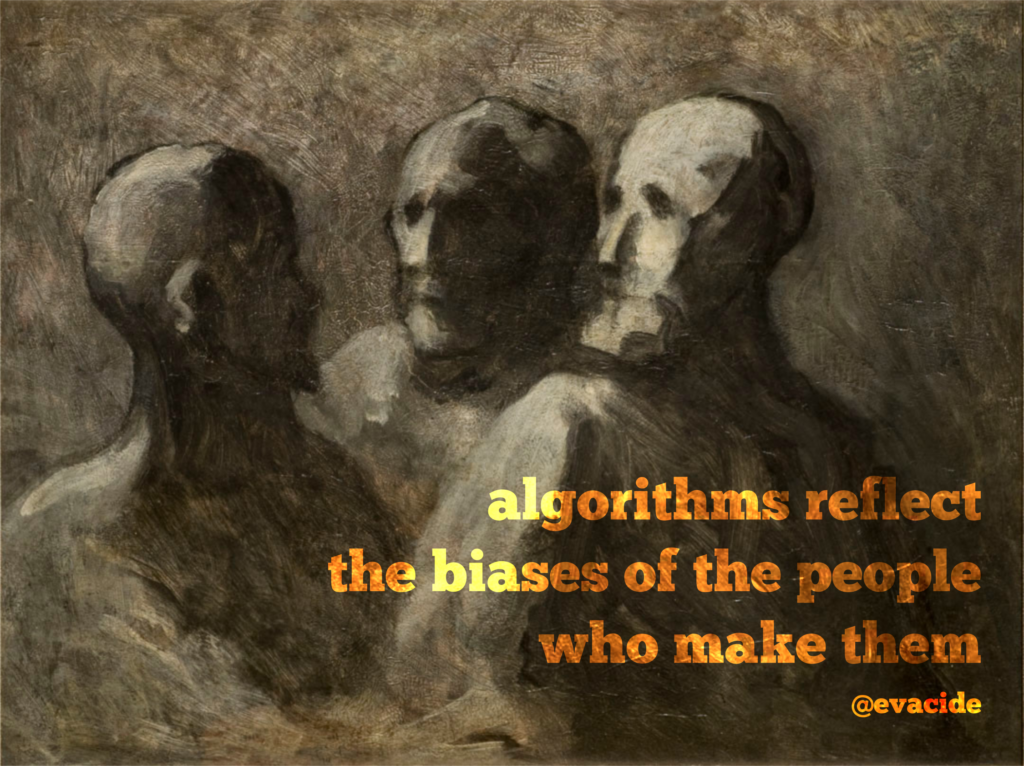

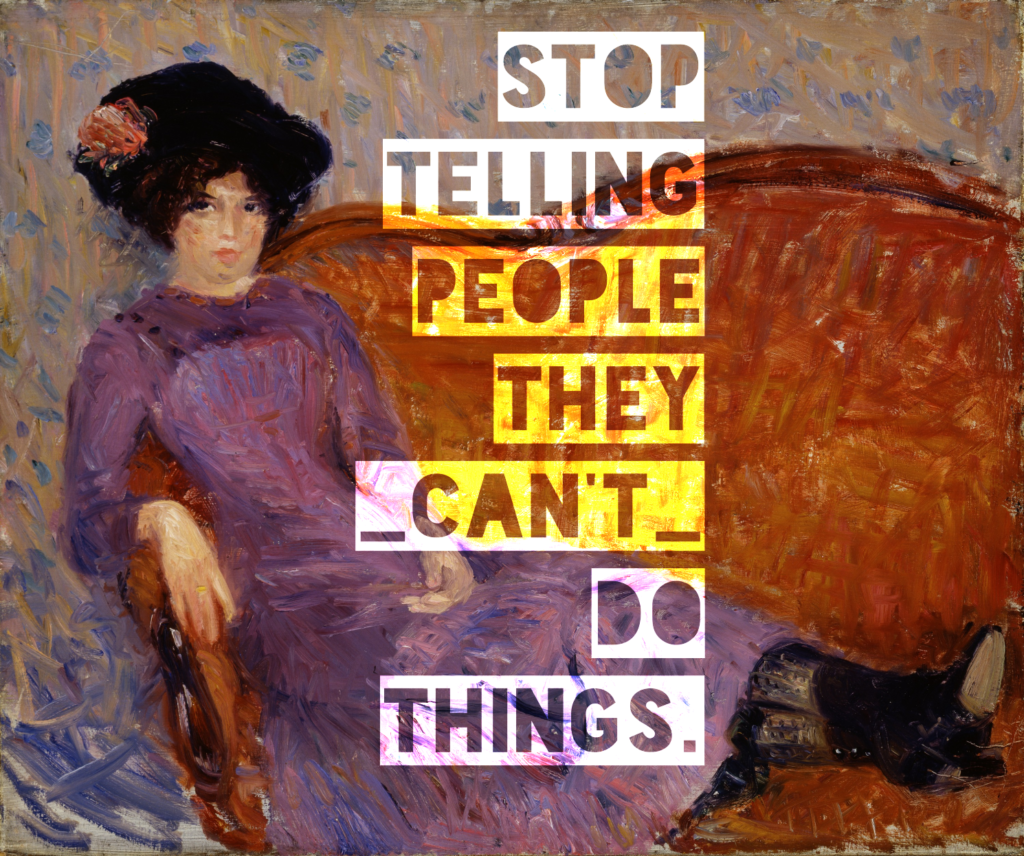
@jessfraz 
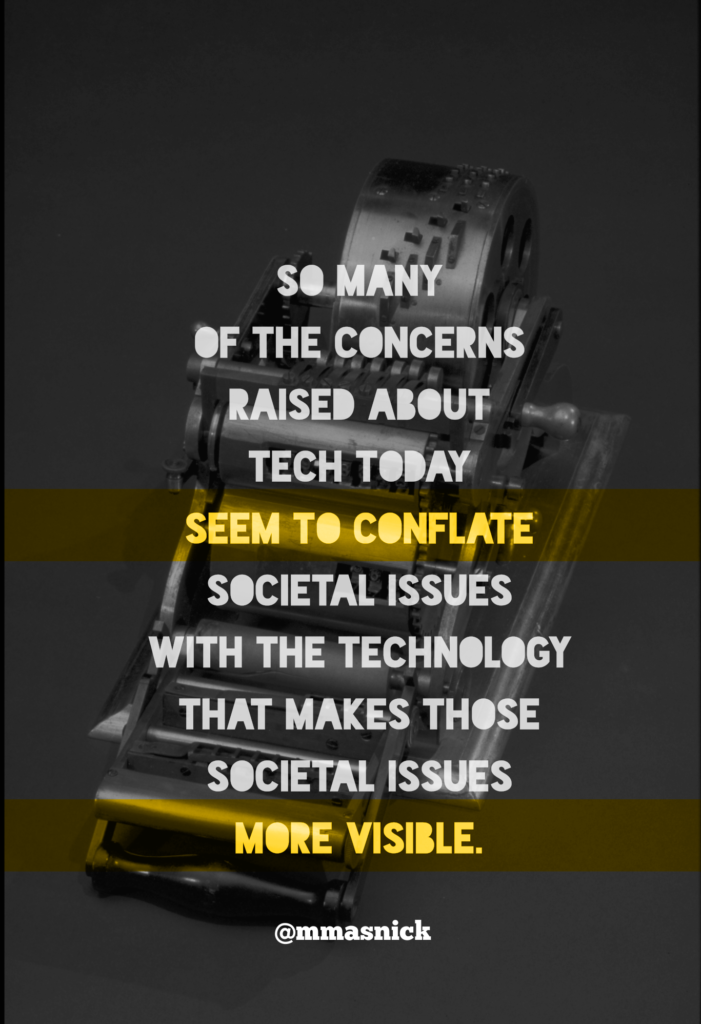
-
repeating important stories forever
Sometimes I am enamored with a phrase.
…common knowledge depends on us repeating important stories forever.
@h2onolanThe context of the phrase (a tweet) is below, but the context only shrinks the meanings of the phrase.
Allow the expansive context to be the one you let the phrase hold: stories are important to the passage of knowledge and must be told forever.
The wonderful artist Nina Paley drew this (though in yet another context) nearly a decade ago.
We are the material through which information flows.
Nina Paley – https://blog.ninapaley.com/2013/12/07/make-art-not-law-2/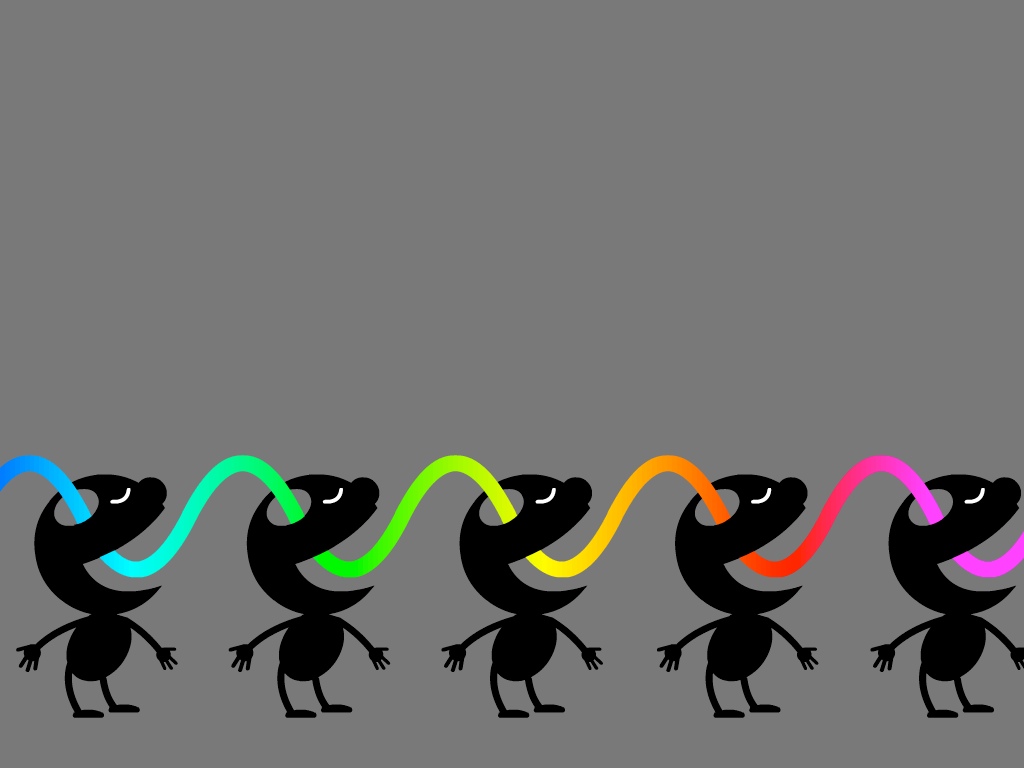
Nina Paley – https://blog.ninapaley.com/2013/12/07/make-art-not-law-2/ May we be great conduits for stories. May we :repeat them forever.
-
ever to the fore!
NORTH POLE
– Winnie-the-Pooh (now, this next morning, gloriously in the public domain)
DISCOVERED BY POOH
POOH FOUND IT.It recently occurred to me
that whatever might happen in the future ― (?)
and whatever has happened is in the past ― (!)
that the present moment is
magic
I find myself sitting
in the final hours of 2021
waiting
I'm waiting for things to settle down
I'm waiting for things to catch up
I'm waiting for Winnie-the-Pooh to enter the public domain
(Finally!)
I'm waiting for the future
that isn't here yet
And when I found myself waiting
I started typing about waiting
but not just typing
first I had to decide which application to use
and then to adjust the background color of the application
and then search for ways to increase the font size on my 4k monitor
and all of this after removing a corroded battery
from a long forgotten Bluetooth trackpad
that had been discarded by my father
earlier in the day
and delivered safely
into the hands
of the tech junkie
whose fingers
now type
this sad
tale
of woe
Or maybe not...
I took a break
made root beer floats
ate crackers
and weird cheese
laughed
I came back here to write about what happened
back then
a few minutes ago
back when a few minutes ago
was the present
it was nice.
And I'm still excited for Winnie-the-Pooh
and "Someone to Watch Over Me"
and others I don't know about yet
I look forward to the future
because I look forward to my presence there
but I have to remember
that I'm present here now
is there a simpler way to say this?
why write it at all?
what's the point?
To remind present me
and future me
(and present you)
to stop waiting
and reminiscing
(at least do it less)
and start
existing
right here
and right now
Why write it down?
maybe someday
a future version of me
will heed the current words of now present me
cobbled from the thoughts and experiences of past me
and exist
...or maybe not.
Either way,
Happy New Year!
May the past be past
the future bright
and the present go
ever to the fore! -

Words
I make words
in place of thoughts
in place of feelings
in place of truthI make words
without thought
without feeling
without truthI make
in place of
in place of
in place ofI make
without
without
withoutI
makeI
placeI
without
I
you
all of us
together
without words
(breathe) -

marketing me
I’m a fairly good marketer because of three things:
- I seek the truth like a good journalist.
- I have a doctorate in Fine Arts (emphasis essentially in storytelling).
- and from an ethical perspective I want to ensure that the story I tell is true (not just technically, but perceptually).
I think it matters that the impression you create in a story actually rings true in reality, and not just in some small, narrow, legal-definitional sense. I strive for that in all the work I do because the story isn’t worth telling if it’s a lie or someone will feel had post-transaction. I’m in it for the truth and the long-term.
But the thing I hate most is marketing myself. It’s not that I’m incapable, but any reduction of a human person is inherently untrue. All human beings contain multitudes―so too do I.
However, the below tweet has reminded me of the importance of at least sharing things I’ve done more publicly.
It’s not that I’ve tried to hide things, but spending the past nearly decade at startup/incubators in the healthcare space and more recently a non-profit have been situations where the work I’ve done has been huge in scope, fast by necessity, and in most cases private by default.
That’s a far cry from the work I did as an artist/educator which was able to be vibrantly public (see #2510s project, for example, and the accompanying exercises). I’ve since done much other work, but I’ve neglected to organize it in a single location and in some fashion as to make it digestible for others. You’d be forgiven for not knowing about my visual art/graphic design showings at some coffee shops (because I mostly didn’t mention them), and my 3×5 project (which is probably somewhere online), and my photo manipulation project of soft squares (which I just found yesterday while cleaning up some photo files).
Part of the Manipulated Photography Squares Series You probably didn’t know about a brief series I did on the negative space between bicycle frames.
Or my flat, cartoonish, object series (some below).
None of this includes the work I’ve done writing code, parsing data, researching, or any other number of things. It’s missing the work I’ve put in learning blender and creating new and interesting things there, often for the Fedora Linux project as a designer.
Self-Referential Multi-plane Camera Patent #2 Self-Referential Multi-plane Camera Patent #1 You can’t know if I don’t tell you.
So I’m going to try to take some time to arrange these things in a singular location in categories that make sense. And, honestly, not just for you―but for me. I honestly forget most things I work on, because I work on so many things.
The trick, as always, with art is to know when something is finished.
¯\_(ツ)_/¯
-
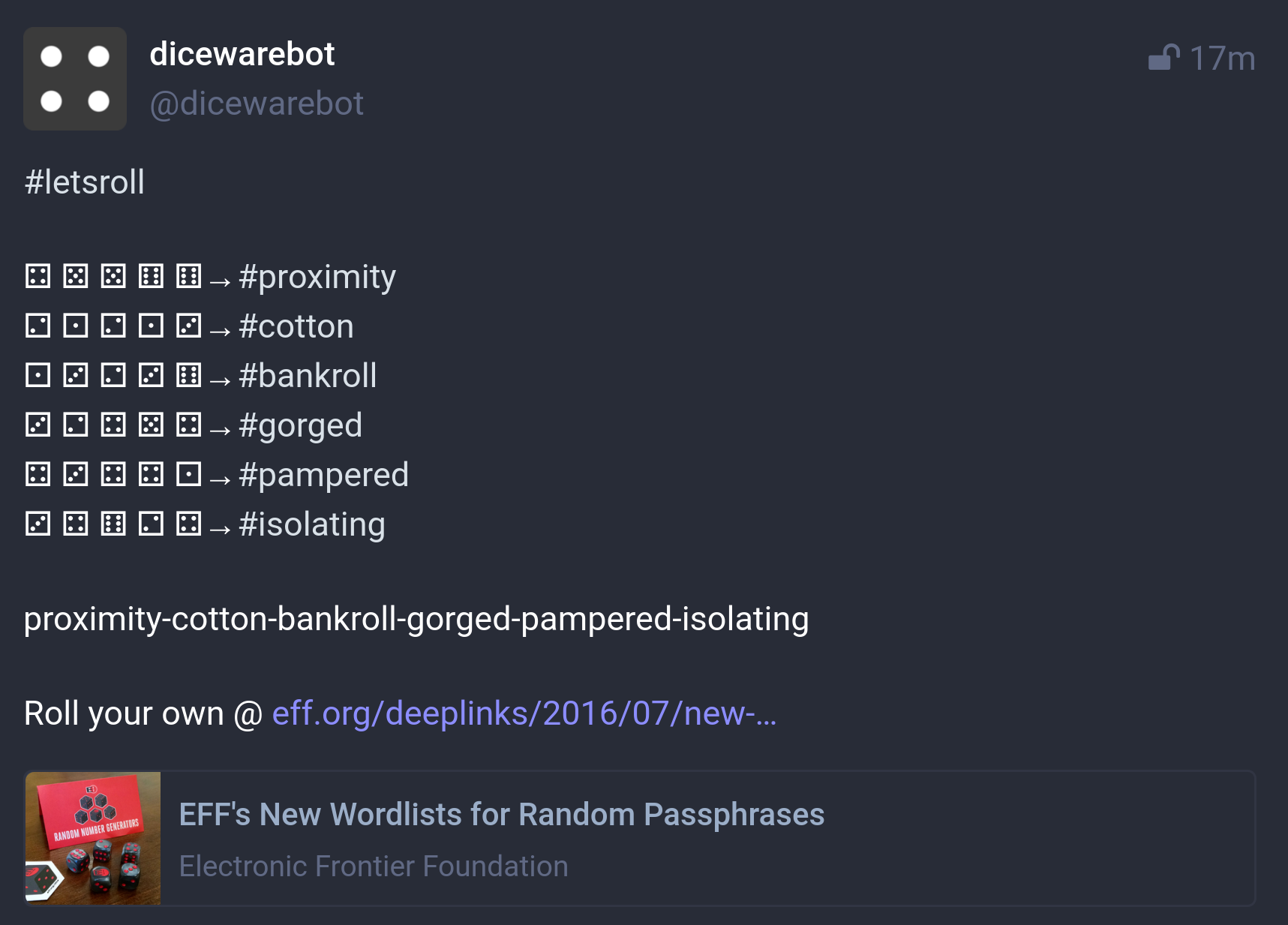
@dicewarebot, the solution I needed that no one asked for
A number of years ago I was trying to learn python. Random numbers have always amused me (as I was recently reminded by a twitter nod to the weird usage of spreadsheets).

A user named @context_ing tweeted: “I love finding the ways in which people use spreadsheets. Personally, I use them for mostly budgeting, workout tracking and travel planning. Here’s a few in the wild I’ve found. Would love to see more! Please share if you’ve come across any or have any yourself.”
I felt compelled to reply with my own little story. “Reminds me of a decade old excel project. A playwriting book said something like “I guess it would be a play if you cut up words from a dictionary and pulled them out one-by-one, arranging them into lines of 10 words under character names, but it wouldn’t be a very good one.” So I took the entire public domain text of Oscar Wilde’s classic and had Excel recreate the play on every reopen of the file by randomly selecting words and character names I think using a vlookup and random. The result was interesting (and likely bad theatre).”
The text in question (blasted tweet limits!) was Oscar Wilde’s The Importance of Being Earnest. The resulting play was garbage, but that random interger generation was magical. When combined with other functions it really could do wonderful things for art.
Fast forward some (10?) years and I had a different problem to deal with: I needed to seamlessly transition all staff and clients from one grouping of technology services at one company to a different group of technology services at a new and different non-profit that was going to just continue doing basically the same work for basically the same people.
To remove almost all complexity from this story: I needed passwords; lots of random, unique, and strong passwords.
I once again turned to my friend the random number generator, but this time in python rather than excel. I coded up a script that would allow me to specify the number of words I wanted, unique separator I desired, and―importantly―how many of these unique passwords I wanted to be generated in one go.
I had the program roll digital dice and lookup words from the EFF’s Diceware password list and then spit them out. People would get their passwords and privately think I was just very adept at coming up with wacky sounding passwords, but I did not deserve this misconception as random integers were to blame for everything.
Eventually I thought it would be a good idea to create a sort of Public Service Announcement on the web about the odd truth that a list of words obtained by rolling dice really can be unique.
The end result is a Twitter bot and a Mastodon bot that very frequently tweet out unique passwords they’ve generated (though you probably shouldn’t use them). More people follow on Mastodon than Twitter, and Twitter relatively frequently blocks my bot’s tweets makes me unnecessarily prove that there’s a human behind the bot to get things going again (anyone at Twitter can explain this?).
At any rate, here’s some examples embedded below. Note that I also added the Harry Potter wordlist as well. There are others for your enjoyment on EFF’s site.
Lastly, there are infinitely better versions of this if you’re looking to generate a password. I’d recommend the much more easily installed passphraseme by Micah Lee.
At any rate, I hope you enjoyed my PSA.
#letsroll
— dicewarebot (@dicewarebot) August 21, 2020
⚄ ⚅ ⚁ ⚅ ⚁→#steed
⚄ ⚀ ⚄ ⚁ ⚀→#require
⚁ ⚀ ⚀ ⚅ ⚂→#cosmetics
⚀ ⚄ ⚃ ⚅ ⚂→#chevy
⚁ ⚃ ⚀ ⚂ ⚀→#doze
⚅ ⚁ ⚅ ⚄ ⚁→#truffle
steed-require-cosmetics-chevy-doze-truffle
Roll your own @ https://t.co/vIw88QUBey#letsroll #muggles #d20
— dicewarebot (@dicewarebot) August 21, 2020
18-18-14 → #england
20-4-1 → #representative
3-9-13 → #greeted
14-16-17 → #disappeared
14-7-6 → #transported
3-4-2 → #strong
england-representative-greeted-disappeared-transported-strong
Roll your own @ https://t.co/q1skhcu0sG -
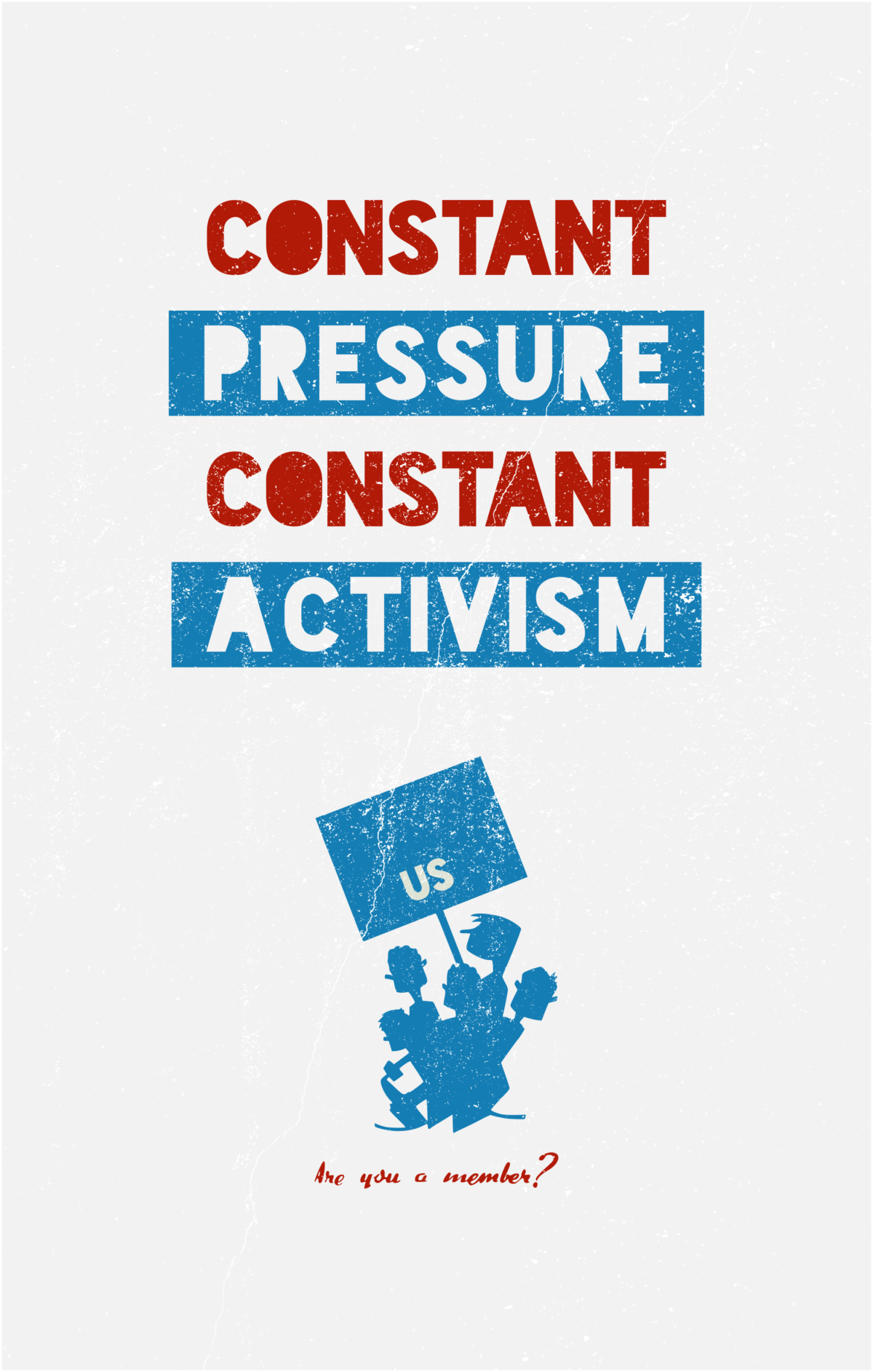
Constant.
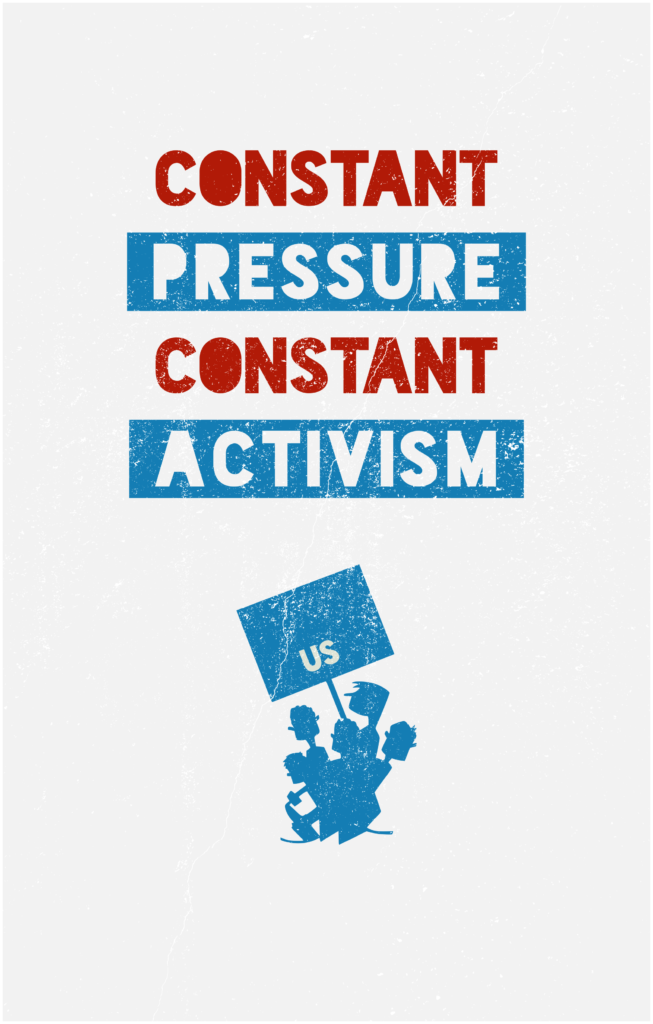
The Poster Elements
This poster is comprised of the following primary elements:
- Partial phrase: “constant pressure, constant activism” uttered by Noam Chomsky in a recent interview.
- Two Works Progress Administration (WPA) posters:
- Graphic & Question: Be kind to books club Are you a member?
- Colors: Exhibition [of] watercolors
- Font: Blackout by The League of Movable Type
- Grit: Manipulated grittiness (me) from a photo by Yeon Li on Unsplash.
The Creation of Fire
The WPA has long been a source of inspiration, awe, and and envy for me. With an extensive background in the arts and theater, the very concept of the government directly investing in the arts in a profound way that leaves a deep impact not only at the time but nearly a century later is something akin to the creation of fire―and the arts was only a part of that wonderful project.
The recent centrality of the Green New Deal―with it’s framing firmly and clearly recalling the New Deal, from which the WPA emerged―has allowed that previous envy to turn to a weird nostalgic hope that my own lifetime might have such a force of art unleashed on the nation.
And if you haven’t read the Green New Deal take the below, easily accessible links, as me encouraging you to read it. I highly recommend the attractively formatted 14-page PDF version, but here are both: [html] [pdf]
So entwined is this national history of art (even the stylistic components) that as the Green New Deal has continued to grasp the imagination of climate activists it was even promoted by commissioned artwork recalling that distant past.
The Spark
I’ve long been musing and meandering internally about somehow contributing artistically to this Green New Deal reality that I would like to exist. Sanders’ movement was and is a part of that reality and seemed the most obvious conduit through which to achieve it.
It still is.
Noam Chomsky’s musing on the Sanders campaign―notably distinct from the movement―was instructive for me:
It’s common to say now that the Sanders campaign failed. I think that’s a mistake. I think it was an extraordinary success, completely shifted the arena of debate and discussion. Issues that were unthinkable a couple years ago are now right in the middle of attention.
The worst crime he committed, in the eyes of the establishment, is not the policy he’s proposing; it’s the fact that he was able to inspire popular movements, which had already been developing — Occupy, Black Lives Matter, many others — and turn them into an activist movement, which doesn’t just show up every couple years to push a leader and then go home, but applies constant pressure, constant activism and so on. That could affect a Biden administration.
– Noam Chomsky on Democracy NowUS
So in addition to the nice quote and concept of “constant pressure, constant activism,” this comment helped me to contemplate what Sanders’ Not me. Us. movement might look like without the Not me part―just Us, graphically.
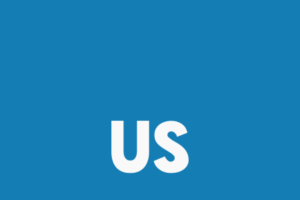
The movement without the man. Yes, it is extremely basic, and no, I can’t say I thought about everything fully here from a design and/or marketing perspective as I was just making a poster with a nice quote, but the simplicity of US being on the bottom center of an otherwise empty sign for many reasons felt right.
- Underdog: Us isn’t on the top… yet.
- True Center: Us isn’t even really on the left―Us is center.
- Young/Small: Us isn’t big enough… yet.
- Acronym: Us is also the U.S.
- Sans Sanders: Us doesn’t have a Me that it’s not anymore―it’s just Us.
On the last bullet point: I did briefly contemplate having a
Not meon top of the Us, but it’s not needed and it’s not the point. There’s a beautiful simplicity and solidarity in the lone US on a sign, especially when it’s held by characters drawn between 1936 and 1940 as part of the WPA, which was part of the original New Deal, originally to promote books (and presumably the scary socialist libraries that house them). You can see artist Arlington Gregg’s other WPA poster work at the Library of Congress.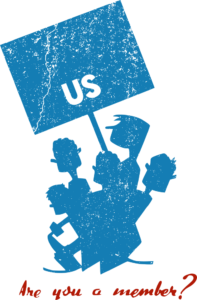
Let me know what you think of this thing. And, as the Sanders yard sign was recently stolen from my font yard I’m thinking of replacing it with an “US” yard sign. It might look nice for a minute before it disappears, but it’s meaning would live on.
-
Sonnet #011
By Kyle R. Conway on 2020-04-15 in GNU Emacs
Note: This was written with the purpose of being less detectable as a structured poem if the line breaks are removed. I’ve placed that version immediately above the formatted sonnet.
(Secret) Sonnet #011
In quarantine I have been writing thoughts down in my org-mode notebook to preserve the things I’m thinking as the world’s distraught with stay-at-home’s and flattening the curve. I realize I have been trying to hide the simple joys of language from myself with self-imposed busyness I tried ignoring simple keys to mental health.
So once again I’m writing like I did before I found myself sheltering in place and now I’m so embarrassed that I hid the writing I should otherwise showcase. At any rate, I thought I’d write and share this secret sonnet of which you’re now aware.Sonnet #011
In quarantine I have been writing thoughts
down in my org-mode notebook to preserve
the things I’m thinking as the world’s distraught
with stay-at-home’s and flattening the curve.I realize I have been trying to hide
the simple joys of language from myself
with self-imposed busyness I tried
ignoring simple keys to mental health.So once again I’m writing like I did
before I found myself sheltering in place
and now I’m so embarrassed that I hid
the writing I should otherwise showcase
At any rate, I thought I’d write and share
This secret sonnet of which you’re now aware. -
Sonnet #001
By Kyle R. Conway on 2020-03-22 Sunday in GNU Emacs
When stuck in time between a tunnel’s light
and each escape obscured by mortal dread
from whence shall solace torch a flame so bright
alleviating anxiousness in head?Must nothing happen as all sit and watch
such silent and invisible true foes
encroach so quietly and cut each notch
by stealing life breath underneath each noseUncertainty―uncertain though it seems―
may be a sort of blessing so disguised
to see beyond collective, fevered dreams
and poems composed in fear soliloquized.
By writing I will quell my anxious mind:
immortalized anxiety enshrined! -
hello!!! … World?
This is the original playscript I wrote for The Art of Python that took place at PyCon U.S. in 2019. I additionally performed the piece at PyCon with the directorial help of Sumana Harihareswara and the stage management work and acting performance as the Figure by Mel Chua.
There were some changes to this script for the live performance. I created slides for the event and they were displayed behind me during the performance and are presented throughout the script below as images.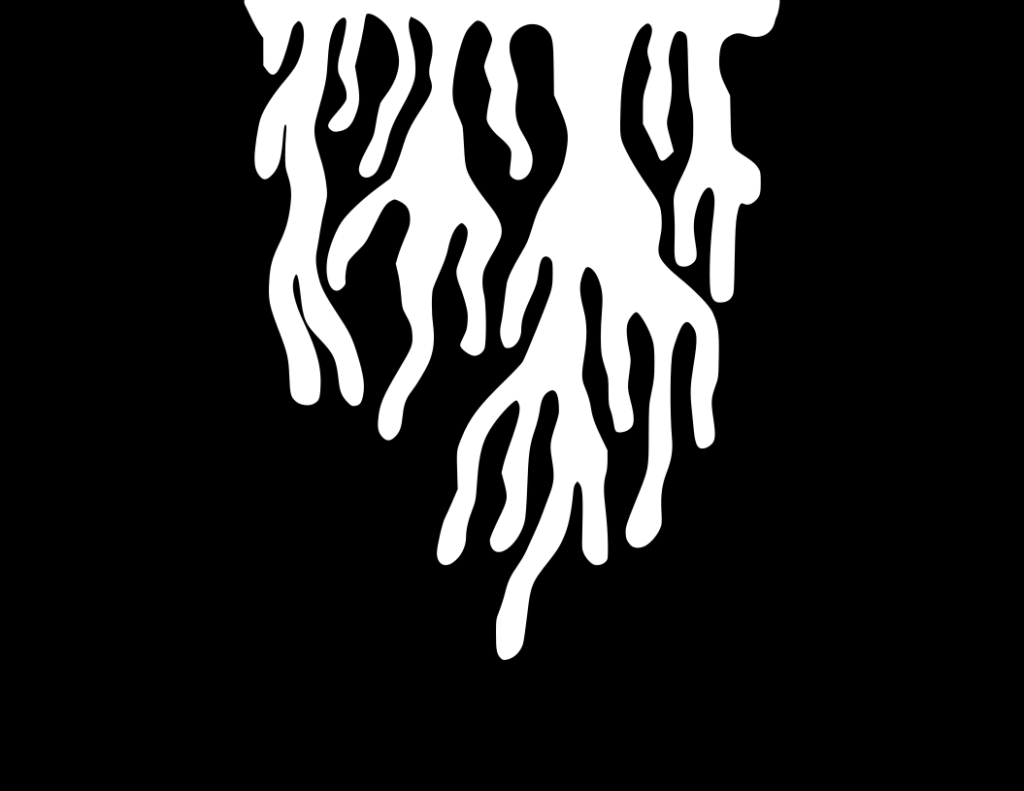
The Void
(slide reads: “THE VOID”)
(the stage is empty. We can make out one person, a figure, front and center.)
Kyle
(staring, wide-eyed, excited, past the audience – beat * 3)
Hello!!!
(slide reads: “This is Kyle –”)
(beat * 3)
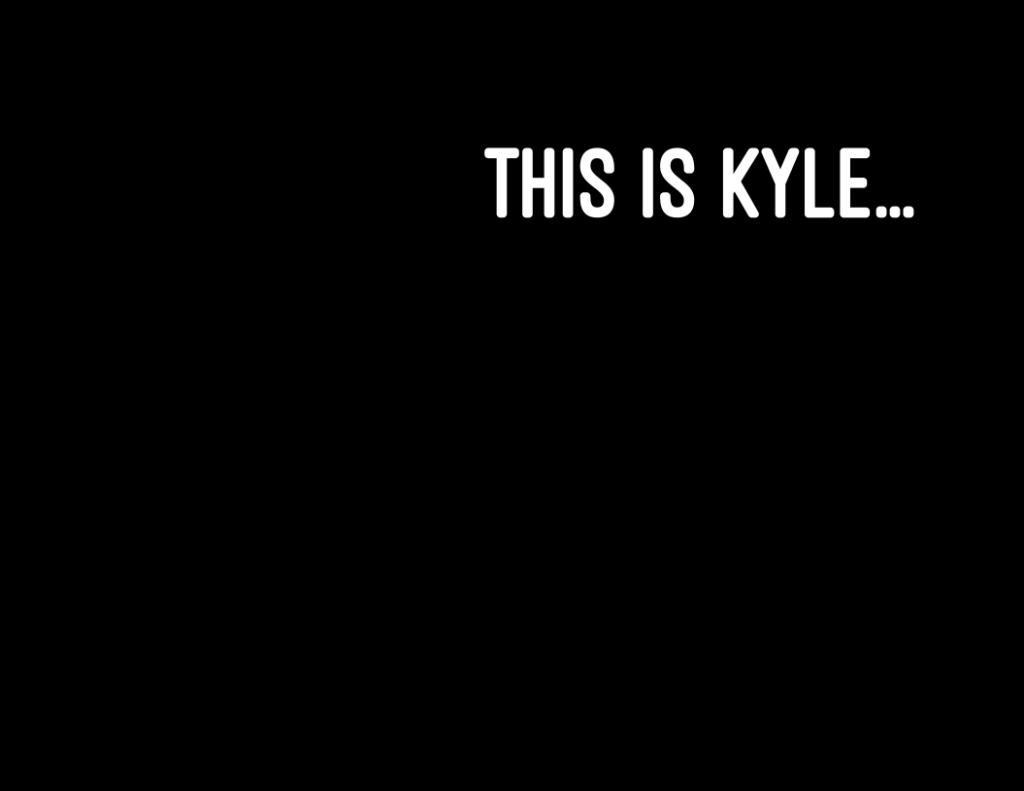
Hello?
(slide reads: “he’s learning the new skill of –”)
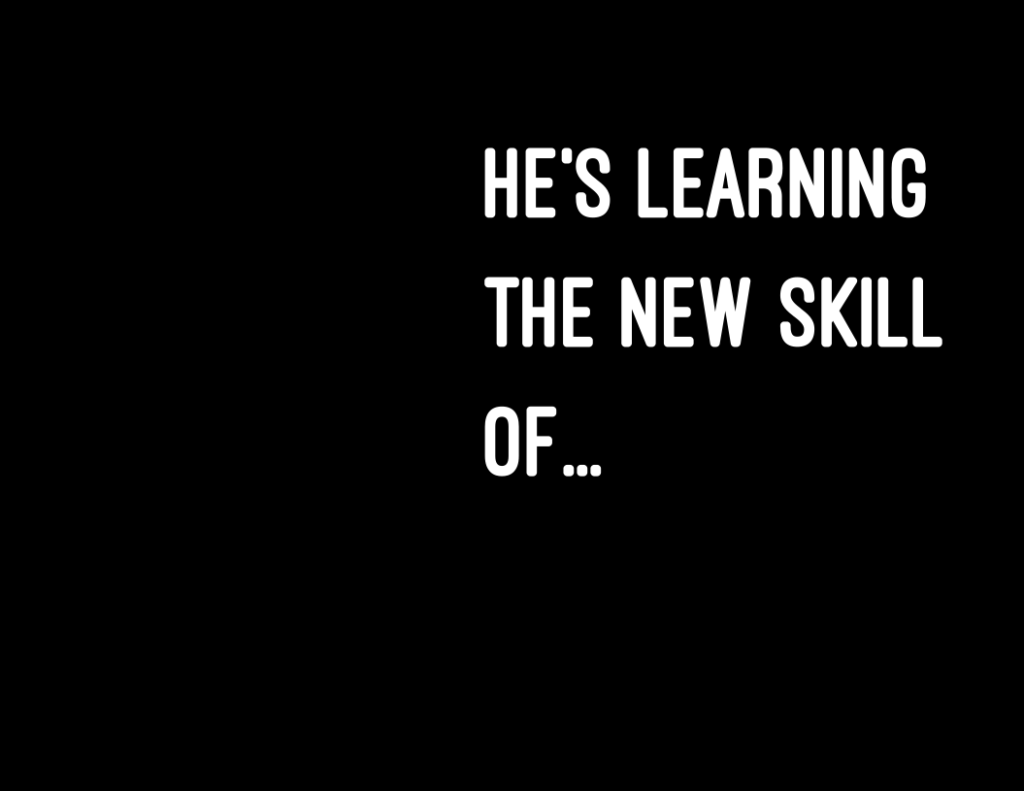
Hello?!
(Terrified / heavy breathing / beat * 1)
(slide reads: “computer programming –”)
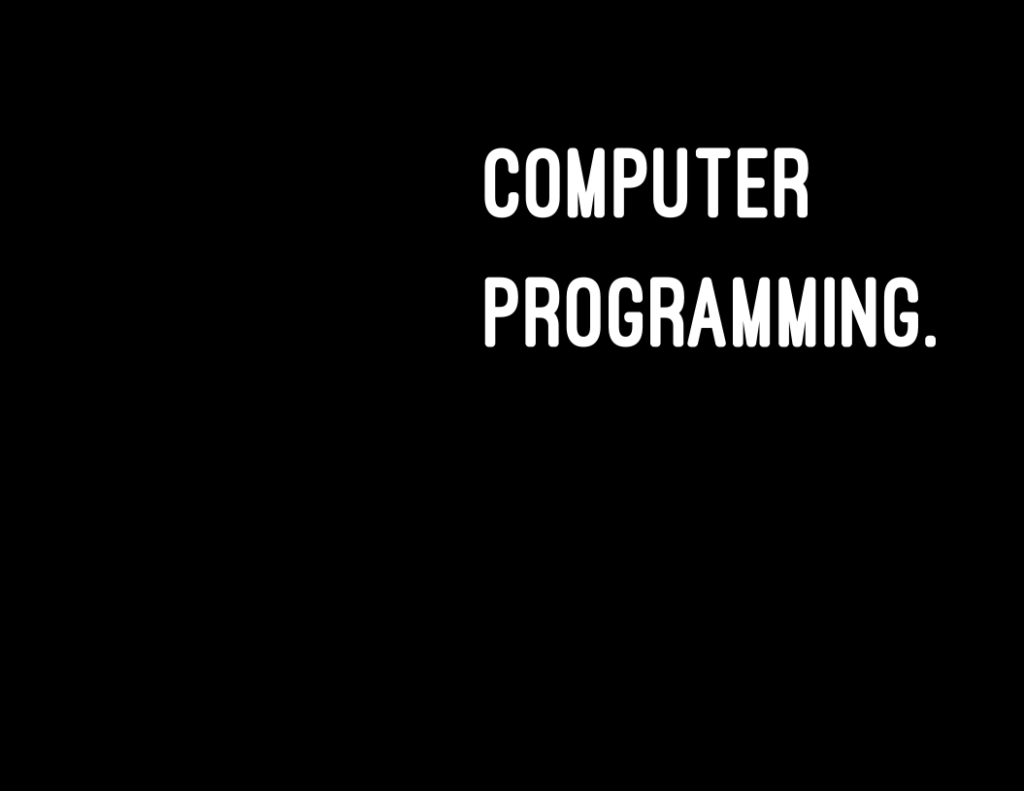
Hello, World?
(Covers his eyes with one hand, twists away from the audience as if what he is about to do might blind him, and clicks a single finger down on an imaginary ENTER key. Bright lights up full. Beat * 3 – he peaks through his fingers.)
It worked? It worked! Ha ha! Yes! Look at that. There it is: “Hello, World!” (Hand on hips – power pose) And you thought this programming thing would be hard.
(slide reads: “but Kyle was in for – “)
(Red lights, loud, blaring sirens)
(Kyle freezes in a macabre, horrific expression and body position)
(slide reads: “– a rude awakening.”)
Not a Programmer
(slide reads: “on not being a programmer”)
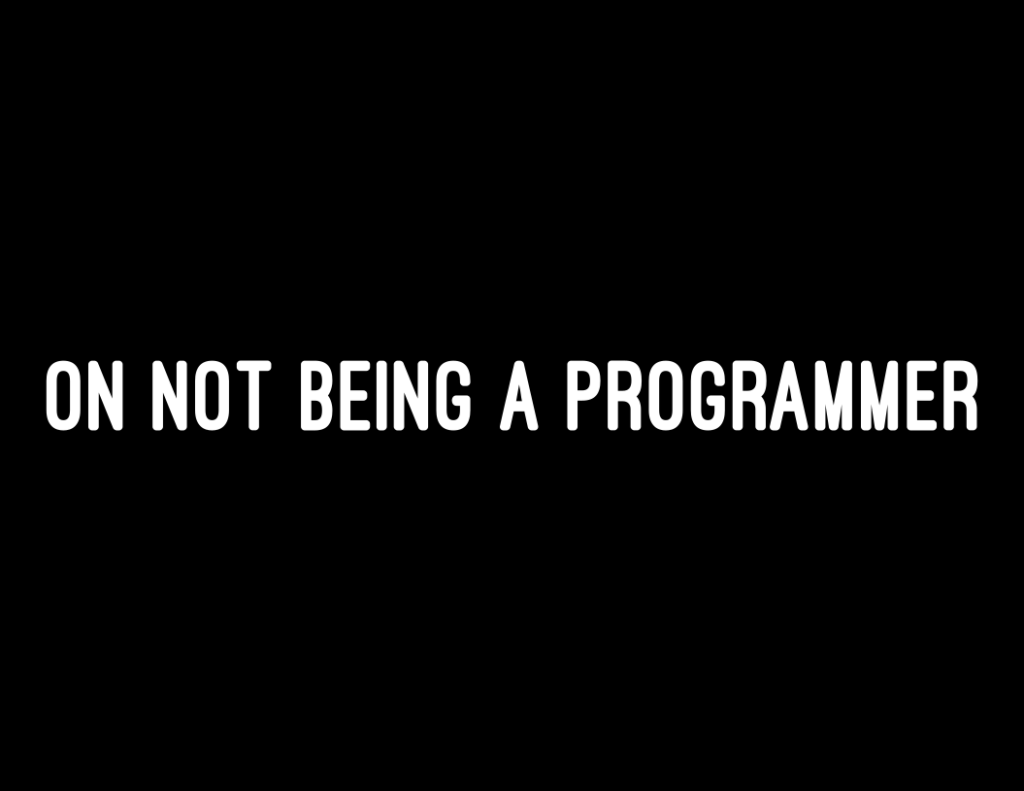
Kyle
No, I’m not a programmer, I’m just better than you are at excel spreadsheets.
(click sound. beat.)
No, I’m not a programmer, I just figured out how to use this query-like syntax with your data in Google’s spreadsheets.
(click sound. beat.)
No, I’m not a programmer. It’s just a little bash script I wrote that helps me journal better from my phone, laptop, and desktop.
(click sound. beat.)
Ha! I wouldn’t say I’m a programmer, I just needed to batch download a really big list of files from a service we were using and python seemed easiest after a google search.
(beat.)
I’m sorry, what?
(beat.)
No, yeah―it did work―ran for about 80 hours straight before finishing. Lots of files.
(click sound. beat.)
Okay―fine―I’m doing some programming: but I’m not really a programmer…
Picking a Language
(slide reads: “on picking a programming language”)
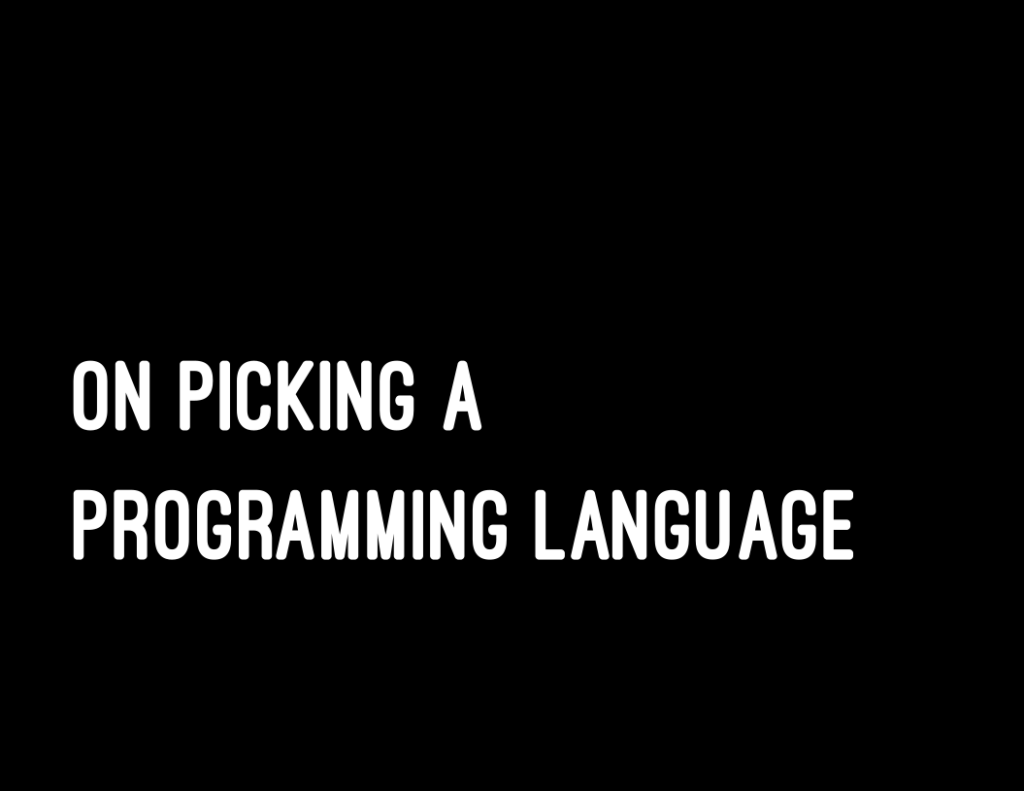
Kyle
Hi. My name is Kyle and I’ve decided to become a programmer. Several blog posts, books, and twitter surveys have lead me to believe that it is of the utmost importance that I:
(the next sequence is rapid-fire)
(between each beat are quick head, body, and vocal tone adjustments)
(very short beat. matter-of-fact:)
Learn Visual Basic, because my high school teacher gave me a book one time and I can probably find that in my basement if I look hard enough.
(very short beat. sarcastic:)
Learn Bash, because it’s already installed on the self-inflicted torture device known as my Linux Desktop.
(very short beat. in jest:)
Learn emacs lisp, because you’ve already invested the time into memorizing emacs keybindings and you’ve heard it could use a good text editor.
(very short beat. whatever:)
Learn Go because people talk about it on twitter a lot and it was created by Google.
(very short beat. haughty:)
Learn COBOL because it’ll always need maintaining, and it pays the best in my geographic location.
(very short beat. overheard/whisper:)
Learn Python because it’s the “second best language at everything.”
(very short beat. honest:)
Learn Javascript because it pairs well with my graphic design background for web development.
(very short beat. snooty:)
Learn R, because it’s the best language at data analysis and graphical representation.
(very short beat. authoritative:)
Learn HTML and CSS because you can make things on the internet―oh, wait―nevermind―there’s disagreement as to whether or not these are programming languages?
(beat. drop all pretense. speak directly to audience―with pure, sincere, exasperation:)
Am I really learning programming if I just know something like “hello, world!” in 10 programming languages!?
(beat.)
… and HTML and CSS?
stack overflow
(slide reads: “submitting a question to stack overflow”)
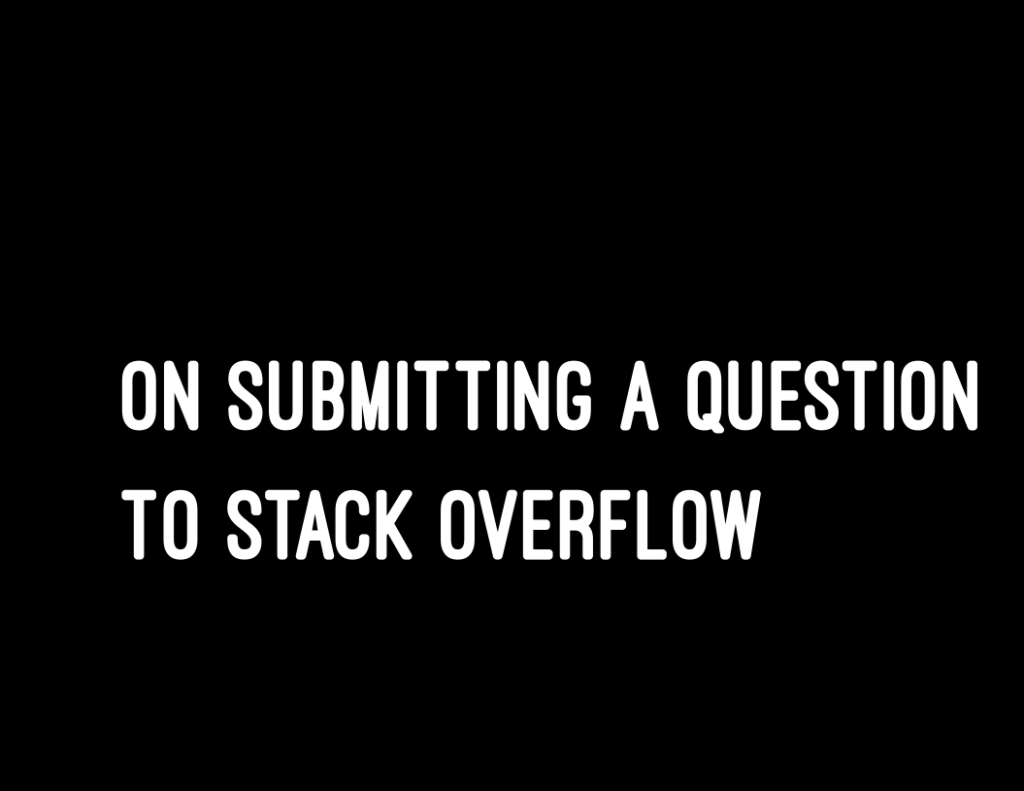
Kyle
(Kyle appears frustrated, staring straight ahead and typing in furious bursts.)
Python. Sort. Array. Count. Items. … Search.
(beat. scrolling:)
No. No. No way! What? No.
(beat. scrolling:)
And… no.
(loud sigh. lowered head. stretch neck. he tries again:)
Python. Array. Group-by-count.
(beat.)
No… no…
(beat. tilts head:)
Sort of?
(clicks. beat.)
Oh. No. No, no, no. Not that, kind of…
(beat. types again)
SQL group by with python?
(beat. smiles/excited:)
Hey! That’s kind of it…
(face drops.)
Oh! Rude! That’s not a helpful or kind response. Do I even want to submit the question here?―mean!―I already don’t know what to ask or how to ask it and apparently that’s a reason to say that you shouldn’t even ask the question.
(beat.)
Maybe I’ll just figure it out myself…>
(a transition. Kyle is holding a rubber duck.)
I’ve heard talking to you helps…
(slide reads: “Kyle works.”)
(duck is gone. cracking knuckles and stretching:)
Done―well, an example anyway, explaining exactly what I want to do and suffers the same problem as my actual work. But I still don’t know how to solve it.
(beat.)
Submit to stack overflow? Submit?
(resolve. clicks enter confidently:)
SUB. MIT.
(transition. later:)
An answer!―that does basically what I need―and they think I asked a good question―and I got fake internet points!
(beat.)
Okay then. Maybe I can do this.
(smile.)
Meetup
(slide reads: “on going to a meetup”)

Kyle
(hands in pockets. kicking dirt. retelling:)
So, I was sick of trying to learn things on my own―by myself, in my basement―and I found a meetup online. It was at a chain soup and sandwich place on a Saturday.
(beat.)
I clicked “attending” and went.
(miming what’s described.)
I got my laptop charged up, threw it in my laptop bag along with a notebook, a pen, and my charger, and slung it over my shoulder and headed in.
(beat.)
I guess I didn’t know what I was expecting? When I walked in and scanned the room looking for more than like four college students with their laptops open over coffee. There they were―I think. Play it cool!
(beat. walking:)
I headed to the counter and ordered a coffee―maybe I’d get thirsty―and walked up: “Is this the python group?”
(uncomfortable smile, holding breath and upright―more uncomfortable long beat…)
It was. That’s what it felt like―forever. They were nice. Young. Old. Macs, Linuxes, and Windows. Qwerty, Colemak, and Dvorak. Gnome and i3. Emacs and Vim and VSCode and Sublime. Working in finance, consulting, healthcare, insurance, startups, and going to college.
(beat.)
They were just people.
(beat.)
I didn’t learn much about programming that day―I did learn that there are real people in real life who care about some of the things I do.
(beat.)
I needed to reach out to more of them.
(break fourth wall. wink.)
Sending an email to a stranger in tech.
(slide reads: “on sending an email to a stranger in tech”)
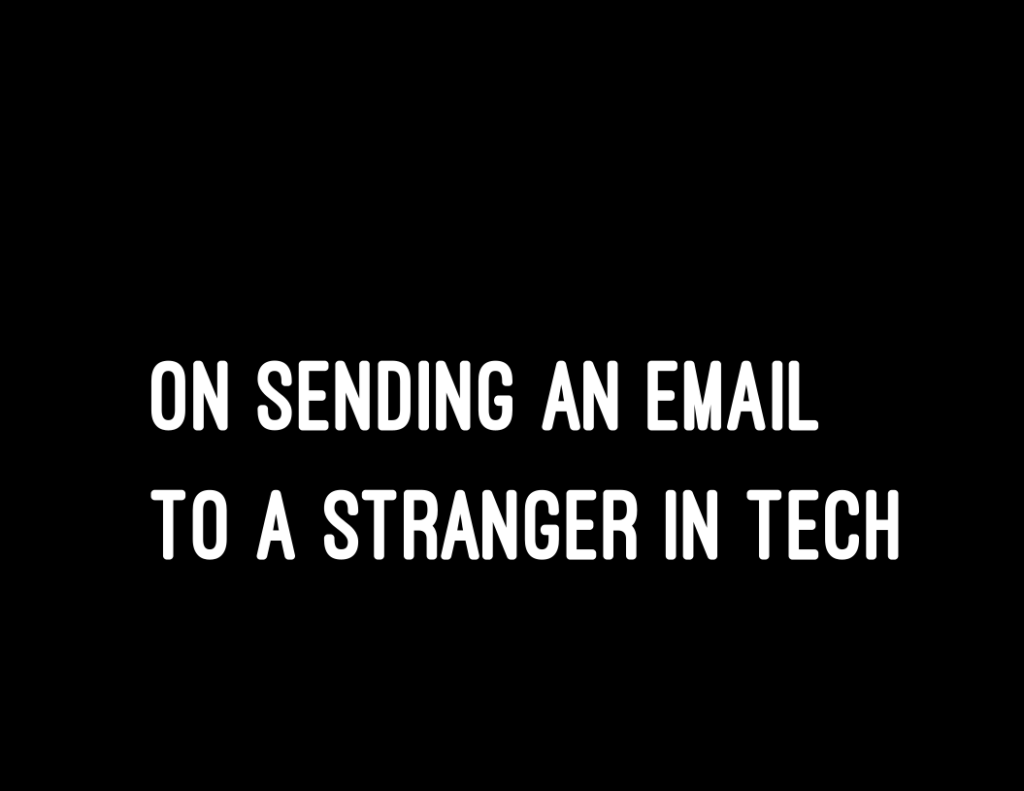
Kyle
(straight to audience. single light.)
(like an awkward introduction at a job interview. exasperated:)
Hi. I’m Kyle. I’m new here. I want to get better at this technology thing. Can you help me? You seem like you could help me.
(beat.)
’cause I need a lot of help.
(ding sound. beat. overly formal:)
Hello. My name is Kyle R. Conway. I have a PhD … in Fine Arts … and you do art … and so do I … but you also do tech things … tech things with art. I would like to do what you do. May I join you?
(extends hand for handshake. beat. wide eyes. beat. more intense.)
(ding sound. beat. casual:)
Hey, tech blogger. I really liked your post about unpackaged fonts with permissive licenses. I think that’s really cool.
(ding sound. beat. rapid-fire round. cheeky:)
Howdy!
(ding sound. beat. Irish:)
Dia duit!
(ding sound. beat. concerned:)
I promise I’m not a creepy stranger.
(ding sound. beat. intense:)
I. Am. Your. Biggest. Fan.
(gong sound. rubbing eyes. honest:)
This is never going to work.
(quick fade. slide reads: “Kyle’s actual first email to a stranger in tech.”)
Thu, Mar 17, 2011 at 11:36 PM>
Máirín,
Would the “Nina” font meet the criteria for inclusion?
http://www.archive.org/details/NinaPaleyFonts
Thanks,
KYLE(slide reads: “Thanks for writing back, Máirín”)
The Figure and the Void.
Figure
(A figure stands alone in the darkness.)
(The figure shouts with naive confidence into the void a single word:)
“Hello!!!”
(and… waits…)
(The figure finishes the phrase―now a question:)
“World?”
(figure stands awkwardly, concerned, awaitang a response with growing insecurity.)
(slide reads, slowly, word-by-word: “what. can. you. do. to. make. this. journey. easier. for. others?)
(slide reads: “end”. )
(ding sound.)
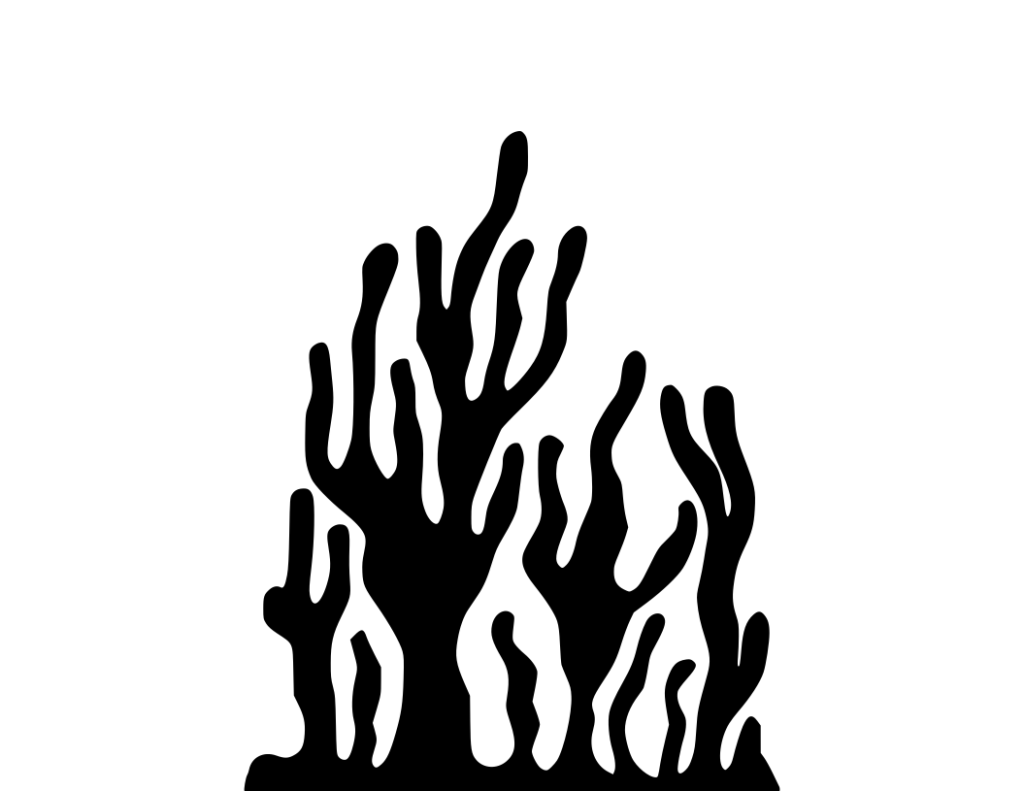
-
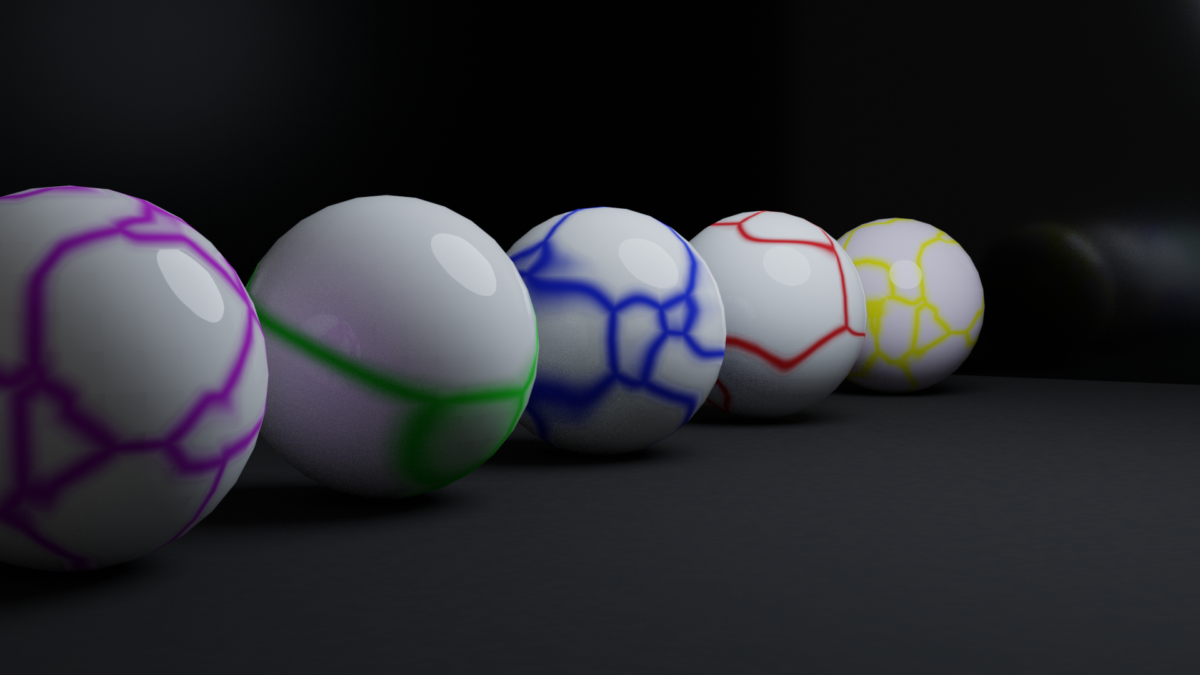
Honestly Blending
If you’ve not messed about with Blender 2.8 yet you’re truly missing out. I’d previously taken some cracks at getting into this 3D software before and quickly found myself returning to the more familiar world of pen and ink or the 2D Inkscape for my artistic needs. But, just look at this procedural marble that I built that changes colors with ease―and also changes perspective (i.e. 3D).
It’s kind of incredible.
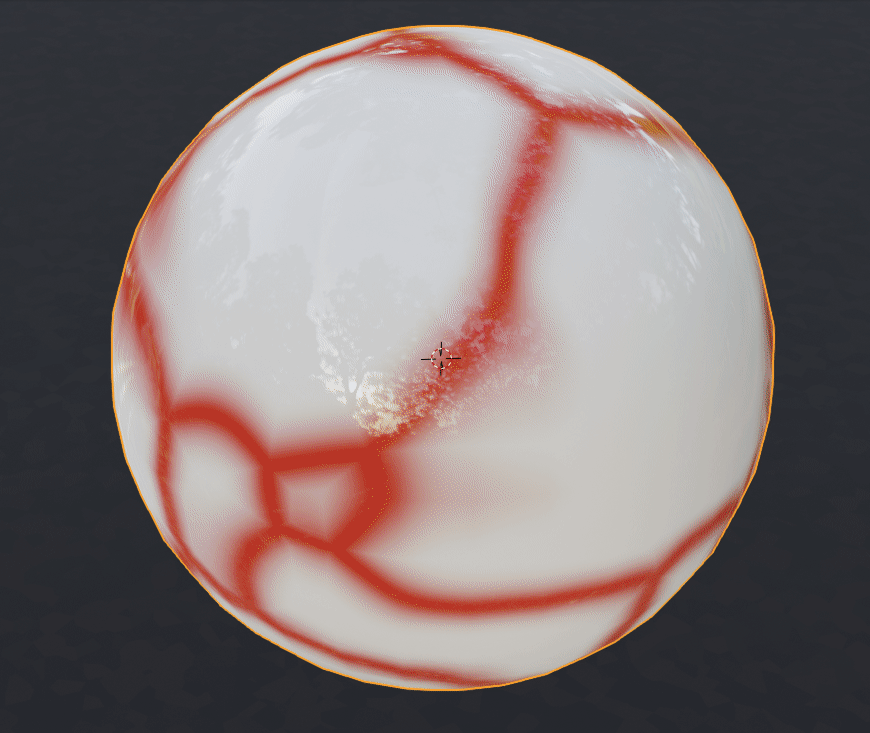
Look at how easily you can change color… and perspective! Below is a screenshot of the node setup I used for the marble. I’m not entirely sure that all of those connections are necessary, but the leftmost node is a texture, then I color it, and have the color connect to both the color of the Principled BSDF shader and to the roughness (which more or less affects how much it reflects the light; or how shiny it is).
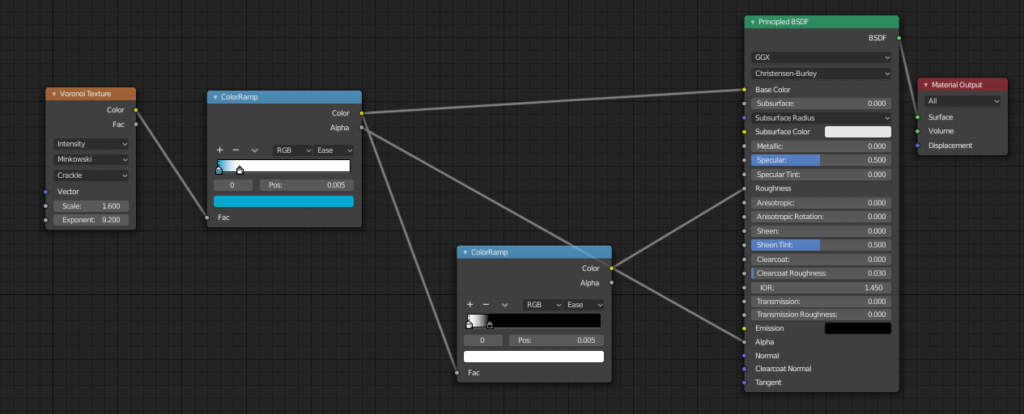
My shading “node” for the marble shown above. I definitely do not understand what I’m doing well enough at this point to be said to have any idea at all of what’s going on, but I’m having a great deal of fun with it. More, certainly, to come.
-

One True Thing
TL;DR
I’m asking you to submit a single sentence that tells your own One True Thing about working in tech for a unique performance at this year’s PyCon conference. Please click here to submit (takes less than a minute!).
Or, if you’re up for something more involved, to submit a longer proposal for the larger event.
Last Year
At last year’s PyCon I was one of several writers and performers at a Hatchery event called The Art of Python, which sought to encourage and showcase novel performance art that aimed to help technologists share their emotionally charged experiences of programming. I wrote and performed an original show titled Hello!!! … World? which outlined my own trials and tribulations in a series of vignettes on trying to get into programming without being around or knowing anyone personally who was a part of those communities. As a small taste, one vignette was titled on submitting a question to stack overflow.
This Year
This year I’m part of the team that’s organizing the event again. We are aiming to create a dramatic narrative around programming and programming culture that shapes so much of all of our daily lives (from our smart phone interactions to surfing the web to banking and even reading this post). We are interested in how fictional narrative, visual and performance art, and different presentation formats can lead to a new sort of self-consciousness and reflection on culture. All society is permeated by technology, whether or not someone is a programmer, and most people have had positive, neutral, and adverse interactions with technology (whether building, consuming, or indirectly being impacted). In short, technology is not a black or white issue, but instead a collection of frustratingly similar shades of gray.
The Zeitgeist is teeming with moral and ethical issues both in and brought about by computer technology―be it developers challenging companies’ practices that conflict with personal values, software licenses trying to append morality clauses, the increasing omnipresence of technology that enables controversial surveillance, or the seemingly endless push toward dark patterns in design.
Technologists face many ethical and moral decisions in computer science and software development. What was the situation? What was the ethical and/or moral discord? What decision was made? How did you come to that decision? What was the outcome for all stakeholders? How do you feel about it now? What might you do differently in the future? Why?
These questions take time to answer and are difficult to dramatize successfully to honor their truth.
An Old Technology
Storytelling is an old technology―a powerful medium―through which we gain empathetic understanding.
All culture is now technological culture to some extent. We believe it is important to integrate the stories of those making this technology to broaden their lexicon and ours. We must highlight their ethical struggles to bring greater transparency and self-consciousness to both technology industry professionals and the public at large. Hopefully this also inspires empathy for all people, and urgency for any obvious changes that result from our workshops and the resulting art.
From Audience to Creator
While our event this year will have unique and pre-rehearsed performances as we did last year, we will also have a workshop following the scheduled performances. During our workshop we will discuss collaboratively how a variety of issues have cropped up in the lives of the programmers participating, as well as the end-users who experienced the technologies. Everyone will have a chance to work with the other directors and playwrights in order to take these insights and begin to turn these stories into dramatic narratives highlighting the personal struggles of these developers that are building the technology that ends up on the front pages of our papers and the billions of tiny-screened pocket computers.
One True Thing
As a part of the planned performances we want to transition into our workshop with a series of real issues crowdsourced from the broader tech community. To that end, we’re asking you to share One True Thing with us so that we can share your truth at PyCon this year (and elsewhere) in a collaborative performance that we hope will inspire more art from technologists.
One True Thing is a performance comprised of single-sentence statements of truth crowd-sourced and eventually read out loud by members of a live audience as statements of someone else’s truth to be publicly shared and communally experienced.
Examples
Note: At the moment I’ve sourced these from technologists on Twitter. Obviously every group would provide their own unique takes, so these should serve only as an example.
Here are some example statements:
- “Racism struggle does not belong to one race.” – @LambyTech
- “Mentors are incredibly important for succeeding in tech” – @js_tut
- “I always joke that someday I will quit the tech industry so I can code all day” – @sarah_edo
- “Moral and political issues of tech aren’t moral and political issues because they are tech.” – @dingstweets
- “A women in tech recently asked me if I had any advice & all I could think of was: have the patience to prove people wrong the rest of your career.” – @jessfraz
- “When you ask a Deaf person if they can read lips, you are asking if you can put the burden of communication solely on them.” – @csano
- “you tech people need to hang out with artists and creative folks more, seriously.” – @noopkat
- “algorithms reflect the biases of the people who make them.” – @evacide
- “So many of the concerns raised about tech today seem to conflate societal issues with the technology that makes those societal issues more visible.” – @mmasnick
Share your One True Thing
Please click here to submit your One True Thing (it takes less than a minute!).
Thanks for reading and for sharing your truth.
